Explore Equatorial Guinea
Plan your trip to equatorial guinea: best of equatorial guinea tourism.


Essential Equatorial Guinea

Equatorial Guinea Travel Guide: Essential Information
:max_bytes(150000):strip_icc():format(webp)/anoukmarrakech-56a373305f9b58b7d0d20299.jpg)
Michael Runkel/ Getty Images
Equatorial Guinea is one of the African continent's least visited countries. It has a reputation for political instability with a history full of coups and corruption; and although vast offshore oil reserves generate huge wealth, the majority of Equatoguineans live well below the poverty line. However, for those in search of a totally different vacation experience, Equatorial Guinea offers plenty of hidden treasures. Pristine beaches and dense forests filled with endangered primates are just part of the country's considerable charm.
Despite its name, Equatorial Guinea is not on the equator. Instead, it is located on the coast of Central Africa , and shares borders with Gabon to the south and east, and Cameroon to the north.
Equatorial Guinea is a small country with a total area of 10,830 square miles/28,051 square kilometers. This area includes a slice of continental Africa and five inhabited islands. To give an idea of its size, Equatorial Guinea is slightly smaller than the U.S. state of Maryland.
Capital City:
The capital of Equatorial Guinea is Malabo, a laid-back city located on the offshore island of Bioko.
Population:
According to the CIA World Factbook, July 2018 estimates put Equatorial Guinea's population at 797,457. Fang is the largest of the nation's ethnic groups, accounting for just over 85% of the population.
Equatorial Guinea is the only Spanish-speaking country in Africa. The official languages are Spanish and French, while commonly spoken indigenous languages include Fang and Bubi.
Christianity is widely practiced throughout Equatorial Guinea, with Roman Catholicism being the most popular denomination.
Equatorial Guinea's currency is the Central African franc. For the most accurate exchange rates, use this currency conversion website .
Like most countries located near the equator, temperatures in Equatorial Guinea remain constant throughout the year and are dictated by elevation rather than season. The climate is hot and humid, with plenty of rainfall and lots of cloud cover. There are distinct rainy and dry seasons , although the timings of these depend on where you're going. Generally, the mainland is dry from June to August and wet from December to February, while the seasons on the islands are reversed.
When to Go:
The best time to travel is during the dry season, when the beaches are most pleasant, dirt roads are in the best condition and forest treks are at their easiest. The dry season also sees fewer mosquitoes, which in turn reduces the likelihood of mosquito-borne diseases like malaria and yellow fever .
Key Attractions:
Equatorial Guinea's island capital is primarily an oil town and the surrounding waters are littered with rigs and refineries. However, a wealth of Spanish and British architecture provides a picturesque insight into the country's colonial past, while street markets burst with local color. The country's tallest mountain, Pico Basilé, is within easy reach, while Bioko Island boasts some beautiful beaches.
Monte Alén National Park
Covering 540 square miles/1,400 square kilometers, Monte Alén National Park is a veritable wildlife treasure trove. Here, you can explore forest trails and go in search of elusive animals including chimpanzees, forest elephants and the critically endangered mountain gorilla . Bird species are prolific here, and you can even arrange to stay overnight in one of the park's forest campsites.
Located 30 miles/50 kilometers south of Malabo on Bioko Island, Ureka village is home to two beautiful beaches – Moraka and Moaba. During the dry season, these beaches offer the opportunity to watch as sea turtles emerge from the ocean to lay their eggs. The surrounding area is also home to pristine jungle and the beautiful waterfalls of the Eoli River.
Corisco Island
Remote Corisco Island is situated to the south of the country near the border with Gabon. It is the archetypal paradise island, with deserted white sand beaches and shimmering aquamarine waters. Snorkeling and scuba diving are both excellent here, while the island's ancient cemetery dates back some 2,000 years and is thought to be one of the oldest in Central Africa.
Getting There
Most visitors fly into Malabo International Airport (SSG), which is also known as Saint Isabel Airport. The airport is located approximately 2 miles/3 kilometers from the capital, and is serviced by international airlines including Ethiopian Airlines, Lufthansa and Air France. Most nationalities (except people from the U.S., China, Barbados and all CEMAC countries) require a visa to enter Equatorial Guinea, which must be obtained in advance from your nearest embassy or consulate .
Medical Requirements
If you are from or have recently spent time in a country where yellow fever is present, you will need to provide proof of yellow fever vaccination before being allowed to enter Equatorial Guinea. Yellow fever is endemic within the country, too, so vaccination is recommended for all travelers. Other recommended vaccines include typhoid and hepatitis A , while anti-malaria prophylactics are also strongly advised. See this website for a full list of recommended vaccines.
This article was updated and re-written in part by Jessica Macdonald on April 24 2019.
Gabon Travel Guide: Essential Facts and Information
Rwanda Travel Guide: Essential Facts and Information
DRC Travel Guide: Essential Facts and Information
Senegal Travel Guide: Essential Facts and Information
Your Trip to Rwanda: The Complete Guide
Tanzania Travel Guide: Essential Facts and Information
Ghana Travel Guide: Essential Facts and Information
Akagera National Park, Rwanda: The Complete Guide
Nigeria Travel Guide: Essential Facts and Information
Cape Verde: Facts and Information
Kenya Travel Guide: Essential Facts and Information
Djibouti Travel Guide: Essential Facts and Information
Madagascar Travel Guide: Essential Facts and Information
Nyungwe Forest National Park, Rwanda: The Complete Guide
Serengeti National Park, Tanzania: The Complete Guide
Eswatini Travel Guide: Essential Facts and Information
Must-see attractions in Equatorial Guinea

Catedrál de Santa Isabel
On the west side of the Plaza de España, this gracious, apricot-hued building is the most beautiful in the country. The architect, Llairadó Luis Segarra,…
Monte Alen National Park
Monte Alen is one of Central Africa's best-kept secrets, and reason enough to visit Equatorial Guinea. A protected area covering 2000 sq km, the park is…
Reserva Natural de Rio Campo
This reserve, in the far northwest of Rio Muni, spans 335sq km and is a Ramsar Wetland of International Importance. Turtles, hippos and goliath frogs…
Arena Blanca
Bioko Island
Arena Blanca is a lovely beach close to Luba, with white sand. It is known for its clouds of breeding butterflies. You'll find the beach is cleaner the…
Luba Mirador
One of two signposted miradors (viewpoints) along the road that crosses Bioko Island, this one is high above Luba and has spectacular views across the…
Moka Mirador
One of two signposted miradors (viewpoints) along the road across the island, this one is high above Moka and has spectacular views over the island and…
This tiny Fang village is worth visiting for its spectacular beach. Standing on the clean sweep of sand, you can see Gabon and the Elobey Islands across…
Parque Nacional de Pico Basile
On a clear day you might be able to see the volcanic peak of Pico Basile, but clear days are rare. The park has dense rain forest and it's worth climbing…
Malabo National Park
This new park is next door to the airport, and covers an area of 870,000 sq metres. The park offers restaurants, a sports area, activities for children, a…
Plaza del Reloj
Also known as the Plaza de la Libertad, this large square features the clock tower of its name (reloj) as well as a memorial statue to those who fought in…
Benito River Bridge
Linking Bolondo with Mbini, this impressive, Chinese-built bridge spans the Benito River and replaces the old ferry. It's lit up at night, but do not take…
Equatoguinean Cultural Centre
A bright yellow building on the main street, this centre is a lovely colonial building with large windows. It has a central atrium that serves as a…
Catedral de Santiago Apóstol y Nuestra Señora del Pilar
Built by the Spanish in 1954, this ochre-plastered cathedral is picked out in brown and stands proud on a hill. It's a severe-looking place, but the…
This deep green house was prefabricated in Belgium in the early 19th century and has recently been restored. It is a prominent landmark and is highly…
Sagrada Familia Church
This small yellow church is in a picturesque location on a wooded hillside overlooking the sea in the village of Basakoto, south of Malabo. A tour of…
Spanish Mission House
In ruins now, this mission house dates to the late 18th and early 19th centuries, when there were many European missionaries, merchants and colonial…
Torre de la Libertad
Built in 2011 to celebrate Equatorial Guinea's independence, this imposing structure is surrounded by gardens and overlooks the sea.
This black obelisk commemorates the visit of Pope John Paul II to Equatorial Guinea in 1982.
More destinations you need to see
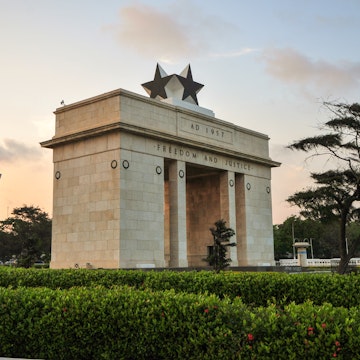

No videos yet!
Click on "Watch later" to put videos here
Equatorial Guinea Travel Guide – Everything You Need to Know

Nestled on the Gulf of Guinea in West Africa, Equatorial Guinea is a nation of stunning natural beauty and vibrant cultures. From lush rainforests to pristine beaches, and a rich blend of ethnic traditions, it’s a destination brimming with untapped potential for travelers seeking unique experiences.
What’s the Best Time to Visit? 📅
The best time to visit Equatorial Guinea as a tourist is during the dry season , which typically runs from December to February . Here’s why this period is ideal for travel:
- Weather: The dry season offers the most pleasant weather with lower humidity, making it comfortable for outdoor activities and sightseeing.
- Wildlife: It’s an excellent time for wildlife enthusiasts as animals are more active during this period, and you can explore the country’s national parks and nature reserves.
- Beach Activities: The dry season is perfect for enjoying the beautiful beaches along the coast, such as in Malabo and Bata. You can swim, sunbathe, and partake in water sports.
- Festivals: Equatorial Guinea hosts various cultural festivals and events during this time, providing an opportunity to immerse yourself in the local culture.
However, it’s essential to keep in mind that the climate in Equatorial Guinea is hot and humid year-round, so be prepared for warm temperatures, even during the dry season. The wet season, which typically runs from June to August , can be challenging for travel due to heavy rainfall and the potential for flooding in certain areas. It’s advisable to check local weather conditions and plan your trip accordingly.
What’s the Best Way to Get Around? 🚌
Getting around Equatorial Guinea as a tourist can be somewhat challenging due to limited transportation options and infrastructure. However, there are several methods to navigate the country:
- Domestic Flights: For traveling between major cities and regions, domestic flights are the quickest and most convenient option. Malabo and Bata are the primary airports, with smaller airports in other cities.
- Taxis: Taxis are a common mode of transport in cities like Malabo and Bata. Be sure to negotiate fares in advance or ask the driver to use a meter.
- Shared Taxis: Shared taxis, often minivans, are a popular way to get around within cities and between towns. These are generally cost-effective, but be prepared for crowded conditions.
- Buses: Local buses operate within cities and to some neighboring towns. They are budget-friendly but may not be as comfortable or reliable as other options.
- Car Rentals: Renting a car is possible, but roads can be in poor condition in some areas, and driving can be challenging due to local driving habits and regulations. An International Driving Permit (IDP) is typically required.
- Walking: In city centers, such as Malabo and Bata, walking can be a convenient way to explore and soak in the local atmosphere.
- Ferries: If you plan to visit islands like Bioko, ferries can be used for transportation. Be sure to check schedules and book tickets in advance.
- Motorcycles: Motorbike taxis, known as “okadas,” are available in some areas for short-distance travel.
Keep in mind that transportation options may vary in different regions of the country. It’s advisable to plan your travel routes in advance, and when using taxis or shared vehicles, agree on fares before starting your journey. Additionally, ensure that you have the necessary permits and documentation for car rentals or other specific transportation needs. Be prepared for varying road conditions and local customs when traveling within Equatorial Guinea.
What’s the Official Language?
The official languages of Equatorial Guinea are Spanish and French . Here are some basic words and phrases in Spanish, which is the most widely spoken language in the country:
- Hola – Hello
- Buenos días – Good morning
- Buenas tardes – Good afternoon
- Buenas noches – Good evening/night
- Adiós – Goodbye
- Por favor – Please
- Gracias – Thank you
- Sí – Yes
- No – No
- ¿Cómo estás? – How are you?
- ¿Cuánto cuesta? – How much does it cost?
- Lo siento – I’m sorry
- Me llamo… – My name is…
- No entiendo – I don’t understand
- ¿Dónde está…? – Where is…?
- Baño – Bathroom
- Comida – Food
- Agua – Water
- Ayuda – Help
- Salud – Cheers (used when toasting)
While Spanish is the primary language, especially in urban areas, you may also hear French and various local languages such as Fang, Bubi, and others in different regions. Learning a few basic phrases in Spanish can be very helpful for communication and will be appreciated by the locals.
Where to Stay? 🏨
Equatorial Guinea offers a range of accommodation options for tourists, primarily in the capital city, Malabo, and the largest city, Bata. Here are some places where you can stay:
- Hotels: You’ll find a variety of hotels in Malabo and Bata, ranging from budget-friendly to luxurious. These hotels offer comfortable amenities and are often the most popular choice for tourists.
- Resorts: Some resorts are situated on the island of Bioko, offering a tranquil and scenic escape with beachfront properties and recreational facilities.
- Guesthouses: In addition to hotels, guesthouses provide a more local and often affordable lodging option. They can be found in urban and rural areas, offering a glimpse into everyday life in Equatorial Guinea.
- Serviced Apartments: In major cities, you may find serviced apartments for short-term rentals. These can be ideal for travelers seeking more independence and self-catering options.
- Hostels: Although less common, hostels are available in some areas and provide budget-friendly accommodation options for solo travelers and backpackers.
- Eco-Lodges: Some eco-lodges can be found in the rainforests and nature reserves, providing a unique and eco-friendly lodging experience.
- Government Guesthouses: In some regions, especially more remote areas, government-run guesthouses may be an option. They tend to be basic but offer a place to stay.
Keep in mind that the availability and quality of accommodations can vary, and it’s advisable to book in advance, especially during peak tourist seasons. Additionally, Equatorial Guinea is known for being an expensive destination, so be prepared for relatively high accommodation costs. Always check the latest travel advisories and local regulations when planning your stay in Equatorial Guinea.
What to Eat? 🍽️
Equatorial Guinea offers a diverse culinary scene influenced by its African and Spanish heritage. When visiting as a tourist, be sure to try these must-try foods:
- Fufu and Ndolé: Fufu, a staple in many West African countries, is often served with ndolé, a delicious stew made with groundnuts, greens, and sometimes meat or fish.
- Succotash: A hearty and flavorful dish made with lima beans, maize, and often seasoned with spices and local ingredients.
- Grilled Fish: Enjoy freshly caught fish, often seasoned with local spices and herbs and grilled to perfection. It’s a popular dish in coastal areas like Malabo.
- Mongol (Plantain Porridge): A comforting and filling dish made from plantains, yams, and other starchy vegetables, often cooked with spices and palm oil.
- Peanut Soup: A rich and creamy soup made with groundnuts, meat, and vegetables, served with rice or fufu.
- Okra Soup: A flavorful soup made from okra and often combined with seafood or meat, served with rice or fufu.
- Achu: A popular dish in Equatorial Guinea, especially in the Fang-speaking region, made from ground cocoyams and served with a spicy palm nut sauce.
- Saka-Saka: A dish made from cassava leaves, often cooked with spices, palm oil, and sometimes with meat or fish.
- Rice and Sauce: A common and satisfying meal in Equatorial Guinea, where rice is served with a variety of flavorful sauces, including peanut sauce, tomato sauce, or fish sauce.
- African Mango: Taste the sweet and tangy flavors of African mango, often used in both sweet and savory dishes.
- Fried Plantains: Enjoy the simple pleasure of fried plantains, often served as a side dish or snack.
- Equatorial Guinean Coffee: Savor a cup of local coffee, which is known for its rich flavors and is often accompanied by a coffee ceremony.
- Equatorial Guinean Tea: Try the traditional tea, which is often served with mint and sugar and is a popular social beverage.
- Tropical Fruits: Don’t miss the opportunity to taste fresh tropical fruits like mangoes, papayas, pineapples, and guavas, which are readily available.
While exploring Equatorial Guinea, be open to trying these local dishes and flavors, which offer a taste of the country’s diverse and unique culinary traditions.
What to See? 🔍
Equatorial Guinea is a small but diverse country with a mix of natural beauty and cultural attractions. Here are some must-see places for tourists:
- Malabo: The capital city is located on the island of Bioko and offers a unique blend of Spanish colonial architecture and African culture. Explore the picturesque streets, visit landmarks like the Malabo Cathedral, and enjoy the local cuisine.
- Bata: The largest city on the mainland is known for its vibrant markets and bustling atmosphere. Discover the local way of life, visit Bata Cathedral, and enjoy the local seafood.
- Bioko Island: This island is home to lush rainforests, waterfalls, and beautiful beaches. Explore the Gran Caldera de Luba, visit the Arena Blanca beach, and experience the island’s unique natural beauty.
- Monte Alen National Park: Located on the mainland, this national park is a UNESCO Biosphere Reserve with diverse wildlife, including gorillas, chimpanzees, and various bird species. Guided tours are available for nature enthusiasts.
- Cocobeach: This coastal town is known for its pristine beaches, and it’s a great place to relax, swim, and enjoy water sports.
- Annobón Island: This remote island offers a tranquil and untouched paradise with beautiful beaches and unique bird species. It’s ideal for nature lovers and birdwatchers.
- Pico Basile: This volcanic mountain is the highest point in Equatorial Guinea and offers stunning views. It’s a challenging hike but rewarding for adventurers.
- Local Markets: Visit bustling local markets like Malabo’s Ela Nguema Market or Bata’s La Catedral Market to experience the local culture and find souvenirs.
- Mikomeseng: Explore this town on the mainland, which is known for its beautiful landscapes and waterfalls. It’s a great place for hiking and outdoor activities.
- Cerveceria Nacional: Visit the local brewery in Bata to learn about the brewing process and enjoy the local beer.
- Local Villages: Engage with the local communities by visiting villages in rural areas and experiencing the culture and traditions of different ethnic groups.
- Museums: Explore the country’s history and culture by visiting museums like the Museo de Arte Moderno in Malabo and the Ethnographic Museum in Bata.
While Equatorial Guinea may not be a typical tourist destination, its natural beauty, cultural diversity, and unique blend of Spanish and African influences offer travelers a memorable and authentic experience. Be sure to check for travel advisories and local regulations before visiting these places.
What to Do? 📸
Equatorial Guinea, with its unique blend of natural beauty and cultural diversity, offers several must-do activities for tourists. Here are some of the top experiences:
- Explore the Capital, Malabo: Wander the streets of Malabo to admire Spanish colonial architecture, visit landmarks like the Malabo Cathedral, and enjoy the local cuisine in the city’s restaurants and cafes.
- Relax on Bioko Island Beaches: Enjoy the pristine beaches of Bioko Island, such as Arena Blanca, Luba, or Ureka, where you can swim, sunbathe, and take in the tranquil coastal surroundings.
- Visit the Rainforests: Explore the lush rainforests of Bioko Island and the mainland, where you can hike through dense greenery, discover waterfalls, and observe diverse wildlife, including rare bird species.
- Wildlife Watching: Go on guided tours to observe wildlife in Monte Alen National Park, which is home to gorillas, chimpanzees, and various bird species. Birdwatching is especially rewarding here.
- Climb Pico Basile: For adventure seekers, hike to the summit of Pico Basile, the highest point in Equatorial Guinea. Enjoy breathtaking views and a sense of achievement.
- Experience Local Markets: Immerse yourself in the local culture by visiting bustling markets like Ela Nguema Market in Malabo and La Catedral Market in Bata, where you can shop for local products and souvenirs.
- Engage with Local Communities: Visit rural villages and interact with local communities to learn about their way of life, customs, and traditions. It’s an opportunity to gain insight into the rich cultural diversity of the country.
- Sample Local Cuisine: Taste the flavors of Equatorial Guinea by trying traditional dishes like fufu and ndolé, grilled fish, okra soup, and other regional specialties. Don’t forget to savor fresh tropical fruits.
- Visit Local Breweries: Explore local breweries, like Cerveceria Nacional in Bata, to learn about the beer-making process and enjoy some local brews.
- Attend Cultural Events: Check for local festivals and cultural events happening during your visit. It’s a chance to experience the vibrant cultural traditions and celebrations of the country.
- Island Hopping: Explore the surrounding islands, like Annobón Island, for a tranquil and remote paradise with beautiful beaches and unique bird species.
- Learn About History: Visit museums like the Museo de Arte Moderno in Malabo and the Ethnographic Museum in Bata to gain a deeper understanding of the country’s history and culture.
- Relax and Unwind: Enjoy the laid-back atmosphere and relax on the beautiful beaches of coastal towns like Cocobeach.
As you explore Equatorial Guinea, remember to respect local customs and regulations and be mindful of preserving the natural beauty and cultural heritage of this unique and relatively unexplored destination.
Culture and Safety 🦺
- Respect for Elders: Equatorial Guineans place a strong emphasis on respect for elders. When interacting with locals, show respect and deference to older individuals.
- Dress Modestly: Equatorial Guinea is a conservative society, so it’s advisable to dress modestly, especially when visiting rural areas and religious sites. Cover your shoulders and knees.
- Greetings: Greetings are important. Use polite expressions like “Buenos días” (good morning), “Buenas tardes” (good afternoon), and “Buenas noches” (good evening/night) when appropriate. A simple handshake is common when meeting people.
- Photography: Always ask for permission before taking photos of people, especially in rural areas. Some individuals may prefer not to be photographed.
- Language: While Spanish is the primary language, many Equatorial Guineans speak their native languages. Learning a few basic phrases in Spanish and local languages can enhance your experience and show respect for the culture.
- Overall Safety: Equatorial Guinea is considered relatively safe for tourists. Violent crime is rare, but petty crimes like pickpocketing can occur in crowded areas, so be cautious with your belongings.
- Healthcare: The healthcare system is limited, so it’s advisable to have travel insurance to cover any unexpected medical needs. Ensure you have any necessary vaccinations before your trip.
- Local Regulations: Respect local laws and regulations. Equatorial Guinea has strict regulations, and violations can lead to legal issues. For instance, taking photos of military personnel or installations is prohibited.
- Travel Advisories: Check for the latest travel advisories and register with your embassy or consulate if required. Keep updated on local conditions and any travel restrictions.
- Currency and Payments: Cash is widely used, and credit card acceptance is limited. Carry enough cash for your needs. Be cautious when using ATMs, and choose secure, well-lit locations.
- Local Customs: Be respectful of local customs and traditions, particularly in rural areas. Ask for permission before entering homes or participating in cultural events.
- Internet and Connectivity: Internet access is limited in Equatorial Guinea, and some social media platforms may be blocked. Be prepared for limited connectivity.
- Wildlife and Nature: When exploring national parks and natural areas, be cautious around wildlife and follow park regulations to ensure your safety and protect the environment.
By respecting the local culture and adhering to safety guidelines, you can have a safe and culturally enriching experience while exploring Equatorial Guinea. Always check for travel advisories and local regulations before your trip and stay updated during your stay.
For tourists, Equatorial Guinea offers a chance to explore the uncharted. As you bid adieu to this undiscovered gem, you’ll carry with you indelible memories of its diverse landscapes, colorful traditions, and warm hospitality. Visit Equatorial Guinea, where adventure meets authenticity, creating a traveler’s tale like no other.
You may also like

State of Palestine Travel Guide – Everything You Need to Know

South Sudan Travel Guide – Everything You Need to Know

Democratic Republic of the Congo Travel Guide – Everything You Need to Know
Travel destinations.
- Experiencing Australia 20
- Experiencing Cambodia 5
- Experiencing China 24
- Experiencing Cruise 6
- Experiencing France 5
- Experiencing Germany 3
- Experiencing Indonesia 10
- Experiencing Italy 11
- Experiencing Japan 10
- Experiencing Korea 7
- Experiencing Malaysia 6
- Experiencing Maldives 7
- Experiencing Myanmar 10
- Experiencing New Zealand 17
- Experiencing Singapore 15
- Experiencing Switzerland 4
- Experiencing Taiwan 14
- Experiencing Thailand 18
- Experiencing Vietnam 5
Top Equatorial Guinea Attractions
Things to do in equatorial guinea.
- 5.0 of 5 bubbles
- 4.0 of 5 bubbles & up
- 3.0 of 5 bubbles & up
- Good for Big Groups
- Good for Kids
- Budget-friendly
- Good for Couples
- Adventurous
- Good for a Rainy Day
- Hidden Gems
- Honeymoon spot
- Good for Adrenaline Seekers
- Things to do ranked using Tripadvisor data including reviews, ratings, photos, and popularity.

1. Catedral de Santa Isabel
2. The Malabo National Park
3. La Casa Verde
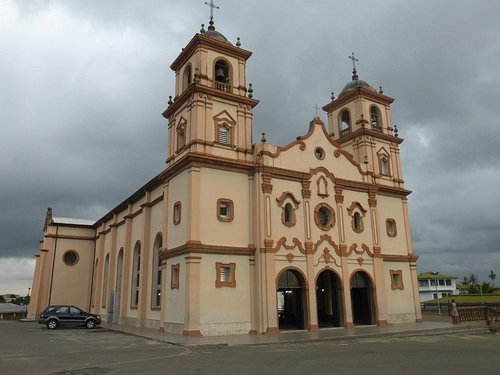
4. Bata Cathedral
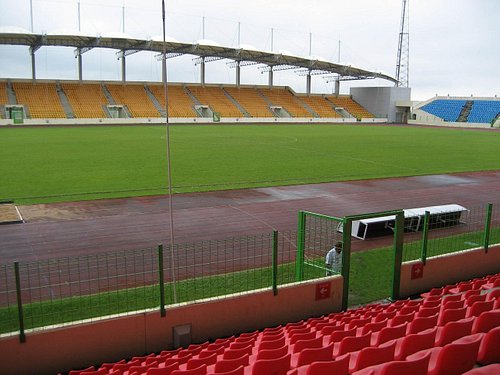
5. Nuevo Estadio de Malabo
6. Finca Sampaka

7. Catedral Basilica de La Inmaculada Concepcion
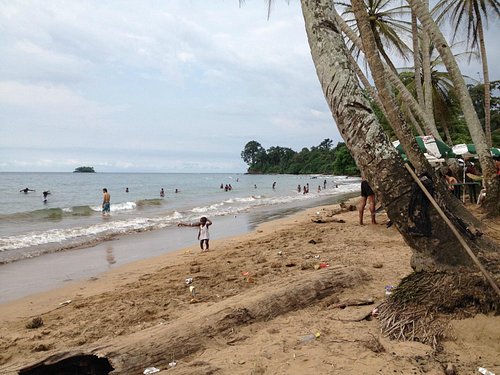
8. Arena Blanca

9. Centro Cultural de España en Malabo
10. Pico Basilé
11. elobey grande.

12. Elobey Chico

13. Iglesia de San Fernando

14. 7m Memorial

15. Catedral de Ebebiyín

16. Hookah Paradise

17. Rumbo Malabo

18. Equatorial Guinea Bodypainting Festival

19. Opatrip Equatorial Guinea
What travellers are saying.
15 Best Places to Visit in Equatorial Guinea

Posted on September 5, 2022 |
Equatorial Guinea, located in Central Africa, is a land of diverse cultural and natural beauty. This stunning country is an excellent choice for nature enthusiasts who wish to connect with local wildlife. Among the many attractions are Pico Basilé, the Moka Valley, and Corrisco.
The 17 km2 island features crystal-clear waters and pristine white beaches . Accessible only by boat or speedboat, this idyllic location is worth the hour-and-a-half journey.
The impressive Pico Basile volcano is another notable attraction. The capital city of Malabo is home to Africa’s largest basilica and is a recommended starting point for your adventure.

Gibloho, a national park established in 2000, spans 700 square kilometers and offers activities such as hiking , bird-watching, and beach relaxation.
For those with a car, well-paved roads connect the main cities. Although public transportation is limited for tourists, it can be organized through tour operators.
Notable sites in Gibloho include the Piedra Nzas Natural Monument and the Parque Nacional de Los Altos de Nsork. Budget-friendly hotels are also available.

Annobon is a coastal town often used as a stopover en route to nearby cities. It offers local attractions and is ideal for a brief rest and refreshment.
Previously named “Anno Bom” or “Annabona”, Annobon is situated in the Atlantic Ocean. It features humpback whale populations and rare species such as Ojo Blanco birds, lizards, and baobab trees.
The National University of Equatorial Guinea showcases historic Spanish colonial architecture with distinctive arches and low, expansive buildings. The vicinity also provides beaches and hiking trails.
Catedral de Santa Isabel

The Catedral de Santa Isabel, or Malabo Cathedral, is situated in northern Malabo, Equatorial Guinea’s capital. It serves as the Archdiocese of Malabo and is the nation’s largest Christian church.
The architecture reflects Spanish colonial influence with its low, expansive structures and distinctive arches. The region also boasts beautiful beaches and ample hiking options.
Pico Basilé

Pico Basile Mountain, the country’s highest peak, is situated on Bioko Island. It’s one of three overlapping basaltic shield volcanoes, offering views of Mount Cameroon across the sea from its summit.
The mountain is positioned in the southeastern region of Equatorial Guinea, approximately 144 kilometers from the capital, Malabo. The area hosts multiple national parks, rich in cultural and natural attractions, including picturesque beaches.
Arena Blanca

Playa de Arena Blanca, a white sand beach on Bioko Island, Equatorial Guinea, is recognized for its abundant butterfly breeding during dry seasons and diverse wildlife, housing over 200 bird species and four sea turtle species.
The beach is a favorite among butterflies in the dry season. Additionally, Monte Alen National Park, inhabited by gorillas, chimpanzees, and elephants, adds to the island’s allure.
The continuous discovery of new species on Bioko Island highlights its biological wealth and stresses the importance of ongoing research and preservation efforts for its unique ecosystems.
Corisco Island

Corrisco is a small, 14 km2 island located off Equatorial Guinea’s coast, near the Gabon border. Named after the Portuguese word for lightning, its highest point is 35 meters above sea level.
After Equatorial Guinea’s independence from Spain, Corrisco became a significant part of the country, featuring white sand, clear waters, and one of Central Africa’s oldest cemeteries.
The climate is warm and sunny, with temperatures between 24 and 26 degC. The island offers wildlife and historical exploration.
Elobey Grande and Elobey Chico

Corisco offers access to nearby islands, Elobey Grande and Elobey Chico, via a short boat ride through a small channel. Elobey Chico appeals to nature enthusiasts with its natural beauty, dense forests, distinctive red dunes, and Africa’s largest conservation area.
Elobey Grande suits hikers due to its favorable climate and scenic views. Boat rides on calm waters are available. The town also holds historical significance, with an old, well-decorated cathedral that is particularly impressive during Christmas.
Elobey Chico, the colonial capital of Rio Muni, boasts stunning landscapes beyond its mountains, including pure water and lush greenery surrounding the peaks. The region provides excellent hiking trails.
Catedral Basilica de La Inmaculada

Noteworthy attractions include the Catedral Basilica de La Inmaculada, Elobey Chico island – the original capital, and Bata Cathedral in Malabo, which is frequently visited by travelers heading to Cameroon.
The National University, established in 1879, is another significant location with a rich history. The campus consists of low, sprawling buildings with unique arches, and the surrounding area offers ample hiking opportunities.
Altos de Nsork National Park

Established in 2000, Altos de Nsork National Park spans 700 square kilometers, making it ideal for birdwatching and hiking. It houses the endangered forest elephant, which can be a nuisance to locals due to crop damage.
The park’s diverse flora and fauna include rare buffalos. It’s optimally explored during the dry season, as rainy conditions can hinder navigation. It’s advisable to carry additional warm clothing to counter potential rain.
Malabo, Equatorial Guinea Capital City

Malabo, Equatorial Guinea’s capital, provides a range of experiences. It includes a coastal path for leisure, sports, and children’s activities, and a food market with over 25 vendors offering diverse cuisine, including local “picapica” and Lebanese dishes.
For those seeking thrills, there’s an exploration route from Moka to a lake, traversing local plant life, and a trip to Ureka to observe waterfalls and potentially leatherback turtles.
The city’s allure also encompasses natural sites like a cocoa plantation with chocolate sampling, Somagec Ranch, and trekking options to volcanoes and lakes, highlighting the island’s biological and cultural wealth.
Malabo’s landmarks include Malabo National Park, Independence Square, and Malabo Cathedral, combining outdoor adventures with historical explorations.

Bata is a city with a lively nightlife, featuring quiet bars, beach parties, and diverse dining options, including international cuisines. It also offers high-end hotels for accommodation.
The city provides a variety of cultural and recreational activities, such as visiting cultural centers, and historical monuments, and engaging in sports and water activities.
Located less than 5 meters above sea level, Bata is an ideal location for sea lovers and is conveniently located near other destinations like Centro Sur Province for further exploration.
Bata is a strategic location for tourism and exploration, serving as a gateway to the mainland’s natural beauty, other cities, conservation sites, national parks, and new capital developments.

Luba’s natural beauty, cultural richness, and culinary delights make it appealing. Historical landmarks like the Cathedral of Santa Isabel and the Fort of San Carlos, along with Monte Alen National Park’s natural beauty, provide a diverse experience.
Luba offers beautiful beaches, diverse wildlife, and cultural heritage. Local dishes include Acara, Poulet DG, and Briket de poisson, featuring bean fritters, chicken with plantains, and grilled fish in banana leaves.
For adventure, visit Playa de Ureca and Playa de Arena Blanca for unique natural beauty, swimming, and snorkeling.
Monte Alen National Park

Monte Alen National Park in Equatorial Guinea is a conservation area featuring a dense rainforest ecosystem spanning approximately 1600 square kilometers, home to diverse wildlife including over 105 mammal species, 65 reptiles, 55 amphibians, and various aquatic life forms, with notable gorilla and chimpanzee populations.
As an Important Bird Area with over 2300 birds recorded, it serves as a sanctuary for migratory birds, emphasizing the interconnectedness of ecosystems and the importance of global conservation efforts.
Prepare for challenging hiking conditions with hot, slippery, and strenuous trails by stocking up on water, dry clothes, and other supplies. The park provides opportunities for hiking and trekking, with the best time to visit in the dry season from December to February.
Related Posts

AWAY AFRICA
© AWAY AFRICA | Africa Inside Out | 2024
© AWAY AFRICA | 2024
Share this article
Equatorial Guinea

- 3 Other destinations
- 4.1.1 The Macías regime (1968 - 1979)
- 4.1.2 The Obiang regime (1979 - present)
- 4.2 Climate
- 4.4 Holidays
- 4.5 Local information
- 5.1.1 Visa application requirements
- 5.2 By plane
- 5.5 By boat
- 6 Get around
- 14.1 Photography
- 14.2 Authorities
- 14.3 Politics
- 14.4 Extreme weather
- 15 Stay healthy
Equatorial Guinea ( Spanish : República de Guinea Ecuatorial) is a small country in Central Africa that's divided into two parts: the mainland and the islands. The mainland is wedged between Cameroon and Gabon . It is one of the largest oil producers in Africa, along with Angola and Nigeria .
Equatorial Guinea is largely homogenous; the Fang (a Bantu origin ethnicity) are the largest ethnic group, making up more than 86% of the population.
Travel provides one the opportunity to explore a former Spanish colony, where a modern society runs under a strict, controlling, and repressive government.
One of the least visited countries in the world, you may attract a lot of attention as a tourist, and many complete their journey without trouble.
Regions [ edit ]

Cities [ edit ]
- 3.752064 8.7737 1 Malabo - the capital, on Bioko
- 1.865 9.77 2 Bata - the major city on the mainland
- Luba - another town on Bioko
Other destinations [ edit ]
- 1.4786 10.1319 1 Monte Alén National Park - fantastic fauna in the center of the mainland
Understand [ edit ]
For visitors, Equatorial Guinea is infamous for its high prices and hard-to-get visas for most. This is nominally a police state, akin to Turkmenistan and North Korea (minus the minders and organized persecution of its inhabitants). As a result, tourist infrastructure is sparse and it is not a high priority for the government. You are likely to face harassment by police forces curious of what you are doing in the country as a "tourist". Since the oil companies operating here are mostly American, Americans may receive marginally better treatment compared to other nationalities (e.g. visa-free entry, less suspicion by police).
Since the discovery of oil, Equatorial Guinea has—at least on paper—one of the highest per-capita incomes on the planet. Despite this, income and day-to-day life for many Equatorial Guineans has improved little, due to the endemic corruption siphoning off oil revenue into the hands of a small wealthy elite. However, there has been progress, and new infrastructure and modernization projects are under construction or even finished, especially on Bioko and around Malabo. Work is in progress (2016) building this new city, called Oyala or Djibloho, on the mainland between Bata and Mongomo . In spite of the impressive-looking new infrastructure, few Equatorial Guineans have access to it, and while the government throws billions of dollars at new construction, less than half the country's population (of fewer than 700,000) have access to clean drinking water.
History [ edit ]

In the Rio Muni region, there is believed to have been a widespread pygmy population, of whom only isolated pockets remain in the north. Bantu migrations between the 17th and 19th centuries brought the coastal tribes and later the Fang.
The Portuguese explorer Fernão do Pó, seeking a path to India , is credited as being the first European to discover the island of Bioko in 1472. He called it Formosa ("Beautiful"), but it quickly took on the name of its European discoverer. The islands of Fernando Pó and Annobón were colonized by Portugal in 1474.
In 1778, the island, adjacent islets, and commercial rights to the mainland between the Niger River and Ogoue Rivers were ceded to the Spanish Empire in exchange for territory in the American continent. From 1827 to 1843, the United Kingdom established a base on the island to combat the slave trade which was then moved to Sierra Leone upon agreement with Spain in 1843. In 1844, on restoration of Spanish sovereignty, it became known as the Territorios Españoles del Golfo de Guinea Ecuatorial . The mainland portion, Rio Muni, became a protectorate in 1885 and a colony in 1900. Between 1926 and 1959 all three regions were united as the colony of Spanish Guinea. Spanish settlers arrived and created plantations in the colony.
The Macías regime (1968 - 1979) [ edit ]
Equatorial Guinea gained independence from Spain in October 1968. Francisco Macías Nguema, the first president, was a brutal, tyrannical, and violent dictator. His repressive regime was complicit in severe human rights abuses (persecution of intellectuals and minorities), banned fishing, and is believed to have personally murdered a third of the country's population.
During this time, Equatorial Guinea was known as the "Dachau" of Africa and Macías has often been referred to as the "Pol Pot" of Africa.
His strong anti-Western views garnered him respect and admiration from the Eastern Bloc, but his views alienated him from much of the Western world.
The Obiang regime (1979 - present) [ edit ]
Macías reportedly ordered the deaths of his family members. Believing him insane, Teodoro Obiang , his nephew, deposed him in a bloody coup d'etat in 1979 and later executed him. Although Obiang's rule is less violent, his regime is still considered to be repressive.
In 1995, large oil reserves were discovered and brought considerable wealth to the country, but this hasn't exactly translated into development; much of the population is poor (70-80% of the population lives in poverty), the country scores poorly on the Human Development Index, and most citizens do not have proper access to drinking water, health care, and basic amenities.
The Equatoguinean government does not tolerate criticism and dissent, and hits back at critics by telling them that they "will not accept interference in the internal affairs of the country".
It doesn't look like things will change in the foreseeable future, but still, hopes are high that things will change for the better.
Climate [ edit ]
Equatorial Guinea has two distinctive and very pronounced seasons: rainy and dry seasons. April to October are the wettest months of the year, and December to March are the driest.
People [ edit ]
The major ethnic groups are the Fang of the mainland and the Bubi of Bioko Island. Sorcerers are still among the most important community members. The abira ceremony that helps cleanse the community of evil is fascinating.
Holidays [ edit ]
Equatorial Guinea recognises the major Christian holidays. 12 October is Independence Day.
Local information [ edit ]
- Equatorial Guinea government website
Get in [ edit ]

Visa requirements [ edit ]
Citizens of Barbados , Cameroon , Central African Republic , Chad , Republic of Congo , Turkey , Tunisia , United Arab Emirates , and Gabon do not require a visa to visit the country.
Visa application requirements [ edit ]
The government officially launched an e-Visa program, making entry into the country much more straightforward. You may apply for an e-visa here . An e-Visa will take three days to process and might be much easier to obtain than an ordinary Equatoguinean visa.
That being said, Equatorial Guinea has historically been one of the most difficult countries to access, mainly because tourism is not a priority of the government. You can apply for an ordinary Equatoguinean visa at an official Equatoguinean consulate or embassy. Although regulations vary from place to place, you are generally required to submit the following with your application:
- Your passport should have a validity longer than six months.
- The document should not be older than three months, and must be submitted in either English, French , or Spanish .
- This is a must.
- This is only required if you plan on applying for a tourist visa.
- The letter must not be older than three months and it must be apostilled by the government.
- This can be very difficult to obtain and is arguably the main deterrent for obtaining a visa to visit the country.
- Some consulates and embassies claim that you do not need an invitation letter if you have a hotel reservation.
By plane [ edit ]

There are two paved airports, one a few miles from Malabo ( SSG IATA ), and one in Bata ( BSG IATA ).
Airlines flying to Malabo airport include Ceiba [dead link] (from Madrid), Turkish Airlines (from Istanbul), Air France (from Paris), Ethiopian Airlines (from Addis Ababa), and Lufthansa [dead link] flies direct from Frankfurt to Malabo.
By car [ edit ]
The capital is on an island. However, the mainland may be accessed from Gabon via paved roads and from Cameroon. Many roads in have been newly constructed and overall Equatorial Guinea has one of the best road systems in Central Africa, specially across the important cities.
The entry from Campo is often closed. Also, the entry from Kye-Ossi and Ebebiyin may deny entry for visa-free Americans if sufficient reason for entry is not presented or if one is not ethnically Caucasian.
Extortion by security forces is not uncommon in Equatorial Guinea, even to the level of local police exacting bribes for trumped-up traffic violations.
By bus [ edit ]
By boat [ edit ], get around [ edit ], talk [ edit ].
The three official languages of the Equatorial Guinea are Spanish , French and Portuguese .
Of the three languages, Spanish is the most useful one and it is the first language of many Equatoguineans. French and Portuguese are neither widely spoken nor widely understood by the majority of Equatoguineans.
The colonial language is Spanish, and the country is also a member of La Francophonie. There is an Anglophone population in Bioko that is historically linked to British commerce on the island. Languages such as French and Portuguese are of official use in the country as well. English is spoken by few people, even in the capital city. The Fang language and Igbo are widely spoken.
See [ edit ]
There are lots of beaches. Take the precautions listed in the ' Stay Safe' category.

Do [ edit ]
Buy [ edit ], money [ edit ].
The currency is the Central African CFA franc , denoted FCFA (ISO currency code: XAF ). It's also used by five other Central African countries. It is interchangeable at par with the West African CFA franc (XOF), which is used by six countries. Both currencies are fixed at a rate of 1 euro = 655.957 CFA francs.
You can withdraw money with a Mastercard or Visa card at any Ecobank ATM in Equatorial Guinea.
Costs [ edit ]
Everything is extremely expensive in Equatorial Guinea. A decent room with very limited amenities (bring necessities such as towels, soap and shampoo as the hotel may not have any) will be €100-400. A simple lunch will cost at least €30 (without drinks such as wine, beer or soft drinks) in a clean, air-conditioned restaurant.
Eat [ edit ]
There are several good places to eat, particularly in Malabo. The coffee shop at Hotel Sofitel (across from the Cathedral along the north coast) offers French cuisine. Hotel Bahia's main restaurant is also a favourite destination for locals and expats. For pizza and pasta, the Pizza Place is the best place in town. For Asian cuisine, Restaurante Bantu offers Chinese cuisine. For Moroccan and European food, try La Luna. Try Equatorial Guinean cuisine such as smoked beef with a black pepper. There is also a roast duck with cheese and onion leaf.
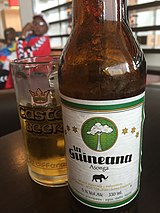
Drink [ edit ]
Ebebiyin is known for its many bars. Wine is available, and the locally produced beer, Guineana, is very good.
Sleep [ edit ]
Due to the influx of foreign workers and foreign investment in Malabo and on the continent, there is an ample choice of hotels.
Stay safe [ edit ]

Photography [ edit ]
Previously, a permit from the Ministry of Information and Tourism was required for photography. Although the law has changed, law enforcement authorities may use this as a reason to target, intimidate, extort, threaten, or even arrest tourists.
As obvious as it may sound, do not walk around with a camera on your neck, and do not photograph airports, government buildings, or anything of military or strategic value.
Authorities [ edit ]
The police are known to be aggressive, truculent, and confrontational. Extortion by them is not uncommon.
Politics [ edit ]
Equatorial Guinea is an authoritarian country that does not tolerate or permit dissent.
It is unwise to criticise or show any kind of disrespect to Teodoro Obiang or the Equatoguinean government . A comment heard by the wrong person can land you in serious trouble with the authorities.
Be very skeptical if someone tries to start a political conversation. Always ask yourself, "What's in it for them?" Since most Equatoguineans know that discussing politics is taboo, there's always some ulterior motive you don't know about.
Extreme weather [ edit ]
Equatorial Guinea is equatorial, its weather conditions are very tropical and normally very hot. It is best to wear lightweight clothing and try avoid wearing anything dark as it may attract mosquitos.
Stay healthy [ edit ]
Food and water: There are no potable or clean water sources in Equatorial Guinea. Visitors should drink only bottled water. Take care when consuming any fruits or vegetables that may have been washed or drinks that may contain ice cubes or 'water' additives such as coffee, tea or lemonade.
Wear shoes: Beaches in Malabo and Bata are beautiful, however, due to discarded trash and unsafe sand bugs, it is a good idea to always wear shoes. This applies to walking on carpeted areas as well.
Malaria medicine: Malaria is a leading cause of death in this country. It is advised that visitors consult their doctor for malaria tablets. Plasmodium falciparum malaria is the most common strain in EG; it is resistant to the anti-malarial drug chloroquine.
According to the US embassy, the La Paz Hospitals in Bata and Malabo are the only two in the country with medical standards of a hospital in a developed country.
Respect [ edit ]
Local people are very hospitable and have a certain familiarity for everything related to Spain, as the country was a Spanish province until 1968. In addition, half of the country's population emigrated to Spain between 1966 and the 1990s.
Connect [ edit ]
- Has custom banner
- Has map markers
- City listing with no coordinates
- Articles with dead external links
- Outline countries
- Outline articles
- Country articles
- Central Africa
- All destination articles
- Has Geo parameter
- Pages with maps
Navigation menu

Tourism in Equatorial Guinea
Disclaimer: Some posts on Tourism Teacher may contain affiliate links. If you appreciate this content, you can show your support by making a purchase through these links or by buying me a coffee . Thank you for your support!
Tourism in Equatorial Guinea is big business. But why is this industry so important and what does it all mean? Read on to find out…
Tourism in Equatorial Guinea
The geography of equatorial guinea , the tourism industry in equatorial guinea, statistics about tourism in equatorial guinea , the most popular tourist attractions in equatorial guinea , the most popular types of tourism in equatorial guinea , the economic impacts of tourism in equatorial guinea , the social impacts of tourism in equatorial guinea , the environmental impacts of tourism in equatorial guinea .
- FAQs about tourism in Equatorial Guinea
To Conclude: Tourism in Equatorial Guinea
Equatorial Guinea, a small but captivating nation on the west coast of Central Africa, boasts a diverse landscape of tropical rainforests, unspoiled islands, and bustling urban centres. In this article, we explore the tourism sector of Equatorial Guinea, shedding light on its growing significance within the country’s economic framework and highlighting its myriad attractions ranging from pristine beaches to rich cultural heritage.
Equatorial Guinea is a country located on the west coast of Central Africa. It is bordered by Cameroon to the north and Gabon to the south and east, with the Gulf of Guinea to the west. Here is an overview of the geography of Equatorial Guinea:
1. Mainland Region (Río Muni): The mainland region of Equatorial Guinea, known as Río Muni, is located between Cameroon and Gabon. It is mainly covered by tropical rainforest, with hilly terrain and numerous rivers. The highest point in the country, Mount Moco, is situated in Río Muni, reaching an elevation of 1,220 metres (4,003 feet).
2. Insular Region: Equatorial Guinea comprises five inhabited islands: Bioko (where the capital city Malabo is located), Annobón, Corisco, Elobey Grande, and Elobey Chico. Bioko is the largest and most populous island, situated in the Gulf of Guinea. It is characterised by volcanic landscapes, including the prominent Pico Basile volcano, which stands at 3,011 metres (9,879 feet) and is the highest peak in Equatorial Guinea.
3. Coastline and Gulf of Guinea: Equatorial Guinea has a coastline along the Atlantic Ocean, forming part of the Gulf of Guinea. The coastline stretches for approximately 296 kilometres (184 miles) and features sandy beaches, mangrove forests, and estuaries. The country has access to important maritime trade routes and fishing grounds.
4. Climate: Equatorial Guinea has a tropical climate, characterised by high temperatures and high humidity throughout the year. The country experiences a wet and dry season, with the wet season generally occurring from February to May and the dry season from June to January. Rainfall is abundant, particularly in the coastal and forested regions.
5. Biodiversity: Equatorial Guinea is known for its rich biodiversity. The country’s rainforests are home to a diverse range of plant and animal species, including various primates, elephants, forest buffalo, and a wide array of bird species. The coastal and marine areas are also important for marine life, including sea turtles, dolphins, and numerous fish species.
6. Natural Resources: Equatorial Guinea possesses significant natural resources, including offshore oil and gas reserves. Oil extraction is a major industry, contributing to the country’s economy. Timber, cocoa, and coffee are among the agricultural products produced in Equatorial Guinea.
7. Infrastructure: Equatorial Guinea’s infrastructure is still developing, with significant investments being made in recent years. The country has international airports on Bioko Island (Malabo) and Río Muni (Bata). Road networks are being expanded and improved, connecting major towns and facilitating transportation within the country.
Overall, Equatorial Guinea’s geography is characterised by lush rainforests, volcanic landscapes, a coastline along the Gulf of Guinea, and a diverse range of flora and fauna. Its natural resources and strategic location contribute to its economic potential and make it a unique destination in Central Africa.
Equatorial Guinea is a country in Central Africa that is still developing its tourism industry. While it may not be as well-known as other African destinations, it has the potential to attract tourists with its natural beauty, cultural heritage, and unique attractions. Here is an overview of the tourism industry in Equatorial Guinea:
1. Cultural Tourism: Equatorial Guinea has a rich cultural heritage with diverse ethnic groups, each with its own traditions, languages, and customs. Visitors have the opportunity to explore local villages, interact with communities, and witness traditional ceremonies and festivals. The Bubi people on Bioko Island and the Fang people in Río Muni are among the prominent ethnic groups in the country.
2. Natural Attractions: Equatorial Guinea is blessed with stunning natural beauty, including rainforests, mountains, and coastlines. The country’s national parks, such as Monte Alén National Park and Pico Basile National Park, offer opportunities for wildlife viewing, birdwatching, and hiking. Bioko Island, with its volcanic landscapes and beautiful beaches, is a popular destination.

3. Beach Tourism: Equatorial Guinea’s coastline along the Gulf of Guinea offers beautiful sandy beaches and warm waters. The island of Annobón, in particular, is known for its picturesque beaches and is gaining recognition as a potential beach tourism destination.
4. Bioko Island and Malabo: Bioko Island, home to the capital city Malabo, is a major focal point for tourism in Equatorial Guinea. Malabo features colonial architecture, vibrant markets, and a growing hotel and restaurant scene. The island also offers opportunities for water sports, fishing, and exploring its volcanic terrain.
5. Wildlife and Nature Conservation: Equatorial Guinea has made efforts to preserve its unique ecosystems and protect its wildlife. Visitors interested in conservation can participate in ecotourism activities, such as guided nature walks, wildlife research, and community-based conservation initiatives.
6. Business and Oil-related Tourism: Equatorial Guinea is a major oil producer in Africa, and as a result, business and oil-related tourism play a role in the country’s tourism industry. The capital city, Malabo, hosts international conferences and events related to the oil and gas sector, attracting business travellers to the country.
7. Infrastructure Development: Equatorial Guinea has been investing in its tourism infrastructure to improve accessibility and attract more visitors. This includes expanding airport facilities, upgrading road networks, and promoting the development of hotels, resorts, and tourist facilities.
It’s important to note that the tourism industry in Equatorial Guinea is still in its early stages of development, and the country faces challenges such as limited international connectivity, infrastructure gaps, and the need for further promotion and marketing. However, with its natural assets and cultural heritage, Equatorial Guinea has the potential to grow and diversify its tourism industry in the future.
Now lets put things into perspective. Here are some statistics about tourism in Equatorial Guinea:
1. Tourist Arrivals: The number of tourist arrivals in Equatorial Guinea is relatively low compared to other African countries. In 2019, the country received approximately 23,000 international tourists.
2. Source Markets: The majority of international tourists visiting Equatorial Guinea come from neighbouring countries such as Cameroon, Gabon, and Nigeria. There is also a small number of visitors from Europe and other parts of the world.
3. Accommodation: Equatorial Guinea offers a limited number of hotels and accommodation options, particularly outside the capital city, Malabo, and the main tourist areas. The availability of high-quality hotels is improving, but the overall capacity remains relatively limited.

4. Average Length of Stay: The average length of stay for tourists in Equatorial Guinea is relatively short, often ranging from a few days to a week. Due to its primarily business-oriented tourism and limited tourist infrastructure, many visitors have shorter stays.
5. Tourism Revenue: The exact tourism revenue figures for Equatorial Guinea are not widely available. However, tourism contributes to the country’s economy through expenditures on accommodation, dining, transportation, and various tourism-related services.
6. Employment: The tourism sector in Equatorial Guinea provides employment opportunities for local communities, particularly in hotels, restaurants, transportation, and tourism-related services. However, the number of jobs generated by the industry remains relatively limited.
7. Sustainable Tourism Initiatives: Efforts are being made to promote sustainable tourism in Equatorial Guinea, focusing on conservation, community engagement, and cultural preservation. This includes initiatives to protect the country’s natural and cultural heritage, as well as supporting community-based tourism projects.
8. Challenges: Equatorial Guinea faces challenges in developing its tourism industry, including limited international air connectivity, a lack of tourism infrastructure in certain areas, and a need for improved marketing and promotion efforts to attract international visitors.
9. Business Tourism: Equatorial Guinea has seen some growth in business tourism due to its position as a major oil producer. The country hosts international conferences, exhibitions, and meetings related to the oil and gas industry, attracting business travellers.
10. Future Potential: Equatorial Guinea has the potential to develop its tourism industry further by diversifying its offerings, improving infrastructure, and enhancing international marketing efforts. The country’s natural beauty, cultural heritage, and unique attractions can be leveraged to attract more visitors in the future.
It’s important to note that the tourism industry in Equatorial Guinea is still in its early stages, and specific data on tourism may be limited. The country continues to work on developing its tourism sector and realising its potential as a destination.
Equatorial Guinea is a country that is still developing its tourism industry, and its tourist attractions may not be as well-known or widely promoted as those in other countries. However, here are some popular tourist attractions in Equatorial Guinea:
1. Malabo: The capital city of Equatorial Guinea, Malabo, is known for its colonial architecture, vibrant markets, and picturesque waterfront. The city offers cultural attractions, including the Malabo Cathedral, Independence Square, and the National Museum of Equatorial Guinea.
2. Bioko Island: Bioko Island is the largest island in Equatorial Guinea and home to the capital city, Malabo. The island features volcanic landscapes, beautiful beaches, and opportunities for hiking and wildlife spotting. Mount Pico Basile, the highest peak in Equatorial Guinea, offers stunning views and hiking trails.

3. Monte Alén National Park: Located in the mainland region of Río Muni, Monte Alén National Park is a biodiverse rainforest area. It is home to various wildlife species, including primates, elephants, and rare bird species. Guided tours and hikes are available to explore the park’s flora and fauna.
4. Arena Blanca: Arena Blanca, located on the southern coast of Río Muni, is a stunning white sandy beach surrounded by lush vegetation. It offers a picturesque setting for relaxation, sunbathing, and swimming.
5. Ureka: Ureka is a fishing village situated on the southern coast of Bioko Island. It is known for its colourful wooden houses built on stilts over the water. Visitors can experience the local fishing culture and enjoy fresh seafood.
6. Bata: Bata is the largest city in Equatorial Guinea and is located in the Río Muni region. It offers a blend of modern infrastructure and traditional African markets. The city has a vibrant nightlife, and the Bata Market is a popular spot for shopping and experiencing the local culture.
7. Moka: Moka is a small town located in the Río Muni region, known for its colonial architecture and relaxed atmosphere. The town features colourful buildings, a central square, and a market where visitors can explore and interact with the local community.
8. Pico Malabo: Pico Malabo is a volcanic mountain located on Bioko Island. While it is not as well-known as Pico Basile, it offers hiking opportunities and beautiful views for those seeking outdoor adventures.
9. Annobón Island: Annobón Island is the southernmost island in Equatorial Guinea and is known for its pristine beaches, clear waters, and unique biodiversity. It offers opportunities for diving, snorkelling, and exploring the island’s natural beauty.
10. Cultural Festivals: Equatorial Guinea celebrates various cultural festivals throughout the year, providing visitors with an opportunity to experience local traditions and customs. The Fang Festival, celebrated by the Fang ethnic group, and the Malabo International Music Festival are among the notable cultural events in the country.
It’s important to note that due to the country’s developing tourism industry, some attractions may have limited infrastructure and services. Therefore, it’s recommended to plan and organise visits in advance or seek local guidance for a smooth and enjoyable experience.
Equatorial Guinea, being a country in the early stages of developing its tourism industry, does not have well-established or widely recognized types of tourism. However, here are some of the popular types of tourism that visitors can engage in when exploring Equatorial Guinea:
1. Cultural Tourism: Equatorial Guinea is home to diverse ethnic groups, each with its own traditions, languages, and cultural practices. Cultural tourism allows visitors to immerse themselves in the local communities, witness traditional ceremonies and festivals, and learn about the rich cultural heritage of the country.
2. Nature and Wildlife Tourism: Equatorial Guinea boasts lush rainforests, diverse ecosystems, and abundant wildlife. Nature and wildlife enthusiasts can explore national parks such as Monte Alén National Park and Pico Basile National Park, go on guided nature walks, birdwatching, and wildlife spotting.
3. Adventure Tourism in Equatorial Guinea: With its volcanic landscapes, mountains, and rugged terrain, Equatorial Guinea offers opportunities for adventure tourism. Activities such as hiking, mountain climbing (e.g., Mount Pico Basile), and exploring remote areas can be enjoyed by adventure seekers.
4. Beach Tourism in Equatorial Guinea: Equatorial Guinea’s coastline along the Gulf of Guinea features beautiful sandy beaches and warm waters. Visitors can relax, sunbathe, swim, and indulge in water sports along the beaches of Bioko Island and the mainland.
5. Sustainable and Eco-Tourism in Equatorial Guinea: Equatorial Guinea is making efforts to promote sustainable tourism practices. Eco-tourism activities such as exploring rainforests, participating in conservation projects, and supporting community-based initiatives are gaining importance in the country.
6. Business and Oil-related Tourism in Equatorial Guinea: Due to its status as a major oil producer in Africa, Equatorial Guinea attracts business travellers and professionals involved in the oil and gas industry. The capital city, Malabo, hosts international conferences, exhibitions, and business events related to the sector.

7. Cultural Exchange Programs: Equatorial Guinea provides opportunities for cultural exchange programs, allowing visitors to interact with local communities, experience daily life, and participate in community-based projects. This type of tourism promotes cross-cultural understanding and meaningful engagement.
It’s important to note that the tourism industry in Equatorial Guinea is still in its early stages, and the range of tourism activities and offerings may be limited compared to more established tourist destinations. However, the country’s natural beauty, cultural diversity, and unique attractions provide a foundation for different types of tourism experiences.
The tourism industry in Equatorial Guinea is still developing, and its economic impacts are relatively modest compared to other sectors such as oil and gas. However, tourism does contribute to the country’s economy in several ways:
1. Employment Generation: The tourism sector provides employment opportunities for local communities, particularly in areas such as hospitality, tour operators, transportation, and other tourism-related services. This helps create jobs and generate income, improving livelihoods and reducing unemployment.
2. Revenue Generation: Tourism in Equatorial Guinea brings in foreign currency through expenditures by international visitors on accommodation, dining, transportation, souvenirs, and various tourism activities. This revenue can contribute to the national economy and potentially help diversify sources of income beyond the oil sector.
3. Business Opportunities: The growth of tourism in Equatorial Guinea creates opportunities for local businesses to cater to the needs of tourists. This includes hotels, resorts, restaurants, tour operators, handicraft producers, transportation services, and other ancillary services. These businesses contribute to the overall economic development and can stimulate entrepreneurial activities.
4. Infrastructure Development: To accommodate the needs of tourists, infrastructure development often takes place, including the construction and improvement of airports, roads, hotels, resorts, and other tourism-related facilities. This infrastructure development benefits not only the tourism sector but also other sectors of the economy, promoting overall growth and development.
5. Cultural Preservation and Heritage Conservation: Tourism in Equatorial Guinea can help raise awareness and appreciation for the cultural heritage and traditions of Equatorial Guinea. This can lead to efforts to preserve and protect cultural sites, traditional practices, and historical landmarks, contributing to the preservation of the country’s cultural identity.
6. Indirect Economic Effects: Tourism in Equatorial Guinea can stimulate other sectors of the economy, such as agriculture, handicrafts, transportation, and services. Local farmers, artisans, and suppliers may benefit from increased demand for their products and services as a result of tourism activities.
It’s important to note that the tourism industry in Equatorial Guinea is still in its early stages, and its economic impacts are relatively limited compared to other countries with well-established tourism sectors. However, with continued investment, infrastructure development, and strategic planning, tourism has the potential to contribute further to the economic growth and diversification of Equatorial Guinea.
1. Cultural Exchange and Understanding: Tourism in Equatorial Guinea provides opportunities for cultural exchange between visitors and local communities. This can foster mutual understanding, appreciation, and respect for different cultures, traditions, and ways of life. It allows locals to share their heritage and traditions while visitors gain insight into the local culture, promoting cultural diversity and tolerance.
2. Community Empowerment: Tourism in Equatorial Guinea can empower local communities by creating income-generating opportunities. Local residents can participate in tourism-related activities, such as offering accommodations, providing tour services, selling handicrafts, or engaging in cultural performances. This can lead to improved livelihoods, increased community pride, and a sense of ownership over their cultural heritage.
3. Preservation of Cultural Heritage: Tourism in Equatorial Guinea can create incentives for the preservation and conservation of cultural heritage sites, artefacts, and traditional practices. The need to cater to tourists’ interests often prompts efforts to protect and showcase cultural assets, leading to the preservation of local traditions and historical landmarks.
4. Infrastructure Development: The growth of tourism in Equatorial Guinea often requires the development of infrastructure such as hotels, resorts, transportation networks, and recreational facilities. Improved infrastructure benefits both tourists and local communities by providing better access to basic services, enhancing quality of life, and creating opportunities for recreation and leisure activities.
5. Awareness and Pride: Tourism in Equatorial Guinea can raise awareness among local residents about the value of their cultural and natural resources. It can instil a sense of pride and appreciation for their heritage, encouraging local communities to preserve and celebrate their unique traditions, customs, and natural environments.
6. Socio-Cultural Revitalization: Tourism in Equatorial Guinea can contribute to the revitalization of traditional practices, handicrafts, and performing arts. The demand for authentic cultural experiences often leads to the revival of traditional crafts, music, dance, and other artistic expressions, thereby preserving and promoting cultural traditions.
7. Education and Skills Development: The tourism industry can offer opportunities for training and skill development for local residents. This includes language skills, hospitality training, tour guiding, and other tourism-related skills, which can enhance employability and create pathways for personal and professional growth.
It’s important to note that the social impacts of tourism in Equatorial Guinea can vary depending on how tourism is managed and the level of community involvement. Sustainable and responsible tourism practices that prioritise community engagement, cultural preservation, and equitable distribution of benefits are crucial for maximising positive social impacts and minimising negative effects on local communities in Equatorial Guinea.
As the tourism industry in Equatorial Guinea is still in its early stages of development, the environmental impacts of tourism may not be as pronounced as in more established tourist destinations. However, it is important to consider potential environmental impacts and the need for sustainable tourism practices. Here are some key environmental impacts that could arise from tourism in Equatorial Guinea:
1. Habitat Degradation: Increased tourism activities can lead to habitat degradation, particularly in ecologically sensitive areas. Unplanned development, deforestation, pollution, and disturbance to wildlife can occur if tourism is not properly managed. This can have adverse effects on biodiversity and the overall ecosystem.
2. Waste Management: The rise in tourist numbers can contribute to increased waste generation, including solid waste and litter. Inadequate waste management practices could lead to pollution of natural environments, such as beaches, forests, and water bodies. Proper waste management infrastructure and education are essential to minimise environmental impacts.

3. Resource Consumption: Tourism activities often require significant resource consumption, including water, energy, and other natural resources. Without efficient resource management practices, increased tourism can strain local resources, leading to issues such as water scarcity or increased energy demands, which may have ecological consequences.
4. Pollution: Tourism-related activities, such as transportation, accommodation, and recreational pursuits, can contribute to air, water, and noise pollution. Exhaust emissions from vehicles, improper waste disposal, and unregulated boat or cruise ship activities can harm air and water quality, affecting ecosystems and the health of local communities.
5. Coral Reef and Marine Life Impact: Activities such as snorkelling, diving, and boating can have direct impacts on coral reefs and marine ecosystems. Physical damage caused by improper diving practices or anchoring can harm fragile coral reefs and marine life habitats. Responsible diving and boating practices are essential to minimise such impacts.
6. Climate Change: Tourism-related activities, such as transportation and energy use in hotels and resorts, can contribute to greenhouse gas emissions and climate change. As a small island nation, Equatorial Guinea is particularly vulnerable to the impacts of climate change, including rising sea levels, coastal erosion, and extreme weather events.
7. Conservation Challenges: The growth of tourism in Equatorial Guinea may put additional pressure on conservation efforts. Protected areas and wildlife habitats may face challenges in managing visitor impacts, ensuring sustainable tourism practices, and balancing conservation goals with tourism development.
To mitigate these environmental impacts and promote sustainable tourism in Equatorial Guinea, it is important for Equatorial Guinea to prioritise environmental conservation, adopt sustainable practices, and implement policies that balance tourism development with environmental protection. This includes proper waste management, resource conservation, promotion of eco-friendly transportation, and the establishment of protected areas and sustainable tourism guidelines.
FAQ s about tourism in Equatorial Guinea
Now that we know a bit more about tourism in Equatorial Guinea, lets answer some of the most common questions on this topic:
1. Q: Is Equatorial Guinea a popular tourist destination?
A: Equatorial Guinea is still emerging as a tourist destination and may not be as popular as other countries in the region. However, it offers unique cultural and natural attractions for adventurous travellers.
2. Q: What are the must-visit attractions in Equatorial Guinea?
A: Some popular attractions include Malabo, the capital city, with its colonial architecture, Monte Alen National Park for wildlife enthusiasts, and the stunning beaches of Bioko Island and Annobon Island.
3. Q: Do I need a visa to visit Equatorial Guinea?
A: Depending on your nationality, a visa may be required to enter Equatorial Guinea. It’s essential to check the visa requirements and apply in advance.
4. Q: What is the best time to visit Equatorial Guinea?
A: Equatorial Guinea has a tropical climate, and the dry season from December to February is generally considered the best time to visit, with more favourable weather for outdoor activities.
5. Q: What are the transportation options within Equatorial Guinea?
A: Transportation options include taxis, rental cars, and domestic flights. Public transportation is limited in some areas, so it’s advisable to plan and arrange transportation in advance.
6. Q: Is Equatorial Guinea a safe destination for tourists?
A: While Equatorial Guinea has made efforts to improve security, it’s recommended to exercise caution and stay informed about the local situation. Taking necessary precautions and following guidance from local authorities can enhance safety.
7. Q: What currency is used in Equatorial Guinea?
A: The official currency of Equatorial Guinea is the Central African CFA franc (XAF). It’s advisable to carry some cash or use credit/debit cards, keeping in mind that ATMs may not be widely available.
8. Q: What languages are spoken in Equatorial Guinea?
A: The official languages are Spanish and French, while Fang, Bubi, and other local languages are also spoken. English is not widely spoken, so basic knowledge of Spanish or French can be helpful.
9. Q: Are there any cultural etiquettes or customs to be aware of?
A: It’s important to respect local customs and traditions. Dress modestly when visiting religious sites or rural areas, and seek permission before taking photographs of individuals.
10. Q: What are the accommodation options in Equatorial Guinea?
A: Equatorial Guinea offers a range of accommodation options, including luxury hotels, resorts, and mid-range hotels. It’s advisable to book in advance, especially during peak travel seasons.
Equatorial Guinea, a gem in Central Africa, boasts a unique blend of vibrant cultures and biodiverse landscapes. Its tourism industry, although still developing, presents enormous potential with its untouched beaches, rich rainforests, and cultural festivities. As the nation welcomes more tourists, it faces the dual task of boosting its economy while ensuring that the natural and cultural resources are preserved. In conclusion, Equatorial Guinea stands at the cusp of becoming a significant tourist destination, striving to offer enriching experiences while safeguarding its heritage and environment.
If you enjoyed this article about tourism in Equatorial Guinea, I am sure you will love these too:
- 12 important facts about the Africa biomes
- The Great African Migration made simple
- The 13 Most Incredible Deserts in Africa
- The 18 Most Famous Rivers of Africa
- How do game conservation laws affect hunters?
Liked this article? Click to share!
- BUCKET LISTS
- TRIP FINDER
- DESTINATIONS
- 48HR GUIDES
- EXPERIENCES

- DESTINATIONS South Carolina 3 Ways to Get Wet and Wild in Myrtle Beach BY REGION South America Central America Caribbean Africa Asia Europe South Pacific Middle East North America Antarctica View All POPULAR Paris Buenos Aires Chile Miami Canada Germany United States Thailand Chicago London New York City Australia
- EXPERIENCES World Wonders 14 Landmarks That Should Be Considered World Wonders BY EXPERIENCE Luxury Travel Couples Retreat Family Vacation Beaches Culinary Travel Cultural Experience Yolo Winter Vacations Mancations Adventures The Great Outdoors Girlfriend Getaways View All POPULAR Cruising Gear / Gadgets Weird & Wacky Scuba Diving Skiing Hiking World Wonders Safari
- TRIP FINDER Peruvian Amazon Cruise BY REGION South America Central America Caribbean Africa Asia Europe South Pacific Middle East North America Antarctica View All POPULAR Colors of Morocco Pure Kenya Costa Rica Adventure Flavors of Colombia Regal London Vibrant India Secluded Zanzibar Gorillas of Rwanda
- Explore Bucket Lists
- View My Bucket Lists
- View Following Bucket Lists
- View Contributing to Lists
Equatorial Guinea — Attractions
In Equatorial Guinea, a mix of beautiful scenery and rich vegetation promises travelers a variety of enticing attractions. It's rare that a feel of the African tropics, volcanic landscapes, relaxing coastal escapes, and Spanish colonial towns can all be enjoyed in one destination. Tourists generally start in the big cities like Bata and Malabo where they can find contemporary comforts and explore the culture at the markets and try local cuisine before venturing out to the surrounding areas where the wilderness awaits. Getting around may be a bit challenging but enjoyable for the adventurous, whether by bicycle, four-wheel drive vehicle or public transportation.
Monte Alen National Park
One of Central Africa’s secret treasures, Monte Alen is a protected area of tropical rainforests spanning 540 square miles (1,400 square kilometers). The National Park offers a variety of opportunities to enjoy activities like trekking, hiking and wildlife viewing. The forests are home to many species of animals including crocodiles, elephants, chimpanzees, and gorillas. Trained villagers can accompany visitors on a guided day tour to explain the history and significance of the region. The park also features many jungle trails where you may come across various bird species and possibly larger mammals. Getting here is possible from Bata via route taxi, which will stop at Evinayong or taxis will drop you off at EcoFac’s entrance. Address: Mbini, Equatorial Guinea Phone: N/A Website: N/A
This city lies on the mainland, 112 miles (180 kms) from Bata. It is seldom visited by tourists so there is a range of unique places to explore with a more tolerable climate. The surrounding area is ideal for nature enthusiasts and visitors can camp near one of the many secluded waterfalls. Address: Rio Muni, Equatorial Guinea Phone: N/A Website: N/A
Biokno Island’s Beaches
Bioko Island’s only white-sand beach is called Arena Blanca, which is best visited during dry season when several butterflies can be seen in the area. Luba is another destination that is less crowded and seldom frequented by tourists. Address: N/A Phone: N/A Website: N/A
Beaches are the main attractions of Ureca, especially during dry season when mother turtles arrive on the shores to lay their eggs. Appointed villagers patrol the area during nesting season, but visitors are welcome to watch and explore the coastal scenery or go sunbathing. Ureca is also a good starting point for jungle hikes to Rio Eola waterfalls, known for its pristine pools where swimming is allowed. Address: Bioko Island, Equatorial Guinea Phone: N/A Website: N/A
Moca Valley
Situated in the southern highlands of Equatorial Guinea, Moca Valley is home to plenty of natural attractions including Lake Biao, Lake Loreta and the famous Cascades of Moca which house different species of monkeys. Moca Valley is also home to the town of Moka, which is named after King Mookata from the Bubi. Address: N/A Phone: N/A Website: N/A
A major city in Equatorial Guinea, Bata is found on the island of Rio Muni. The less commercialized feel makes it more peaceful than the bustling capital, Malabo, but travelers and visitors alike can feel more at home with newer roads, better electricity, a lovely waterfront, and small markets. Traditional African influences are still seen in the city, particularly in the marketplace where you can buy local dresses and other produce like fresh fish. Bata is lively at night because of its discos and clubs. Address: Rio Muni Phone: N/A Website: N/A
Universidad Nacional de Guinea Ecuatorial
The National University of Equatorial Guinea or UNGE in Malabo is the place to visit for Spanish colonial architecture notable for their low, sprawling structures and distinctive arches. The campus grounds are grassy and there is a statue of Equatorial Guinea’s president, Teodoro Obiang welcoming you. Visiting the university’s older section is a must to see the traditional classrooms arranged in a semi-circle surrounding the lawn. Address: Carreta Luba s/n, Malabo, Equatorial Guinea Phone: +240-240-916-44 Website: http://www.unge.gq
Bioko Biodiversity Protection Program
If you're looking for a lesson in Equatorial Guinea’s wildlife, head to Bioko Biodiversity Protection Program. They organize expeditions to the remote Gran Caldera de Luba area of Bioko Island where nesting sea turtles, several species of primates and unspoiled wilderness await in this unique look at diverse flora and fauna. Address: Calle Botuku Luba S/N, Barrio Presidencia, Malabo, Bioko Norte, Equatorial Guinea Phone: +240-240-56-57-88 or +240-222-73-65-73 Website: http://www.bioko.org
Equatorial Guinea
- Things To Do
- Attractions
- Food And Restaurants
- Shopping And Leisure
- Transportation
- Travel Tips
- Visas And Vaccinations
- History And Culture
- Festivals And Events
World Wonders
These are the most peaceful countries on the planet, the great outdoors, deserts in bloom: 6 spots for springtime wildflower watching, how to plan a luxury safari to africa, british columbia, yoho national park is the most incredible place you've never heard of.
- Editorial Guidelines
- Submissions
The source for adventure tourism and experiential travel guides.
- International edition
- Australia edition
- Europe edition
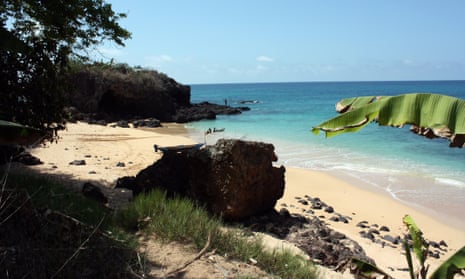
Equatorial Guinea: sixth-least visited country sets sights on tourism
Publication of first English-language guidebook shows one of Africa’s most closed countries has much to offer
F ancy a holiday on which you could explore pristine rainforest buzzing with rare wildlife, doze on idyllic beaches where crystalline waters lap sands soaked in history, and admire unique colonial architecture frozen in time?
Of all the places that might come to mind – Bali, Thailand, the Caribbean perhaps – the small central African nation of Equatorial Guinea, by some accounts the world’s sixth-least visited country , would probably be among the last.
One of Africa’s most closed countries offers just such lures, however, and has become the latest seeking to boost tourism, an increasingly important sector that is moving beyond the cliches of safari parks and skint backpackers.
The added bonus is that you would have the place largely to yourself. Until recently it was cut off from the world by decades of dictatorship.
Best known for a botched coup attempt by Mark Thatcher and the mercenary Simon Mann , and the profligacy of the Obiang family which has ruled since independence in 1968, the country is also home to plenty of hidden gems to lure intrepid travellers.
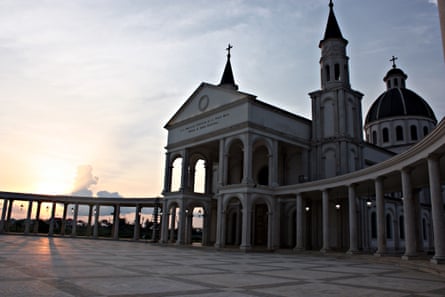
“There are incredibly isolated beaches where you feel like Indiana Jones,” said Oscar Scafidi , who authored the first English-language guidebook for Equatorial Guinea, which will be launched on 4 November.
“There’s an incredible sort of mini Dubai being built in the middle of the jungle, and on the other hand it’s a paradise if you’re into animals – western lowland gorillas, forest elephants and a sea wildlife unique to the area.”
Africa’s only Spanish-speaking country also stands out in other ways. Its islands became an intense slaving and trade hub where European powers and people from Nigeria, Sierra Leone and Liberia all left their mark.
“In Corisco Island, for example, there are Spanish missionary ruins, French architecture and bottles of German gin from the 1800s untouched on the sand,” Scafidi said. “In most countries you’d have crowds of organised tour groups exploiting it, but here it’s just you and the locals.”
Tourist dollars also provide a means for many impoverished locals to benefit directly, he added.
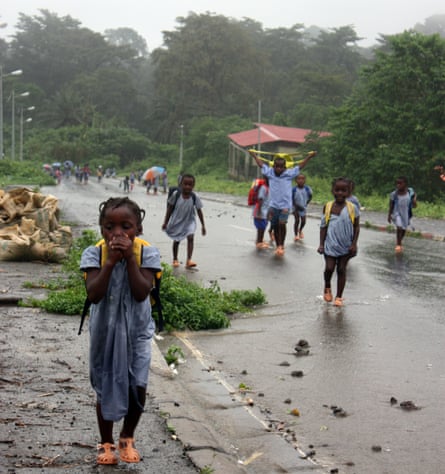
A population of less than a million and lucrative oil and gas fields mean annual per capita GDP stands at around $22,300 (£14,500) – roughly the same as Portugal - but more than three-quarters of the country’s inhabitants live below the poverty line.
Petrodollars have funded impressive construction projects, including the “mini Dubai” near the president’s birthplace. Alongside a new cathedral, plans are apace for an opera house and a new presidential palace. Scafidi describes Equatorial Guinea’s infrastructure as fantastic.
The journey that led to Scafidi’s guidebook began in 2012, when he took time off teaching in Luanda to do an overland trip that took in the countries along Africa’s Atlantic coast from Angola to Cameroon. Like many others, he had to endure the country’s notorious bureaucracy to get a visa. The government has said policies implemented this year have simplified the process as it tries to diversify the economy away from oil.
One of those to benefit is Jim Louth, who runs Undiscovered Destinations , one of the two UK outfits offering package holidays in Equatorial Guinea (the other is Native Eye ). Officials have quickly approved visas for tourists travelling with his company, and two maiden trips starting this month soon filled up.
“Most tourists will only think of Kenya, Tanzania and South Africa, those sort of places, but the rest of Africa is just as fascinating,” said Louth, whose company also runs trips to destinations such as Nigeria, Chad and the Democratic Republic of the Congo.
Louth also points to the issue of perceptions. The Ebola outbreak in West Africa led to a number of phone calls from worried clients earlier this year. Despite the fact that it only seriously affected three countries, the outbreak caused a drop-off in visitor numbers thousands of miles away, such as Kenya and Tanzania. “I had people asking me, can I still go to Ethiopia?” Louth said. “People need to be more informed. It’s a huge continent.”
Frustration at the often unbalanced coverage prompted the Twitter hashtag #theafricathemedianevershowsyou .
#theafricathemedianevershowsyou the ertirea they don't show u.. actually.. they don't show at all.. this is eritrea pic.twitter.com/pltKunZhWo — mama africa (@thatgirlsalina) October 27, 2015
“There’s always an emphasis on a certain type of tourism in Africa, either high-end safaris or backpackers going to Africa to slum it,” said Ruby Audi, a Ghanaian who launched the Hip Africa website to combat such stereotypes.
Meanwhile countries such as Equatorial Guinea remain well off the tourist trail. “People don’t go because no one knows it’s there. If people knew about it, they’d go,” said Scafidi.
- Equatorial Guinea
Comments (…)
Most viewed.
The Perfect Tropical Escape: 10 Places To Visit In Equatorial Guinea
Equatorial Guinea is one of the least visited countries, but this African nation is proud of its attractions.
Equatorial Guinea is one of the least visited countries , but this African nation is proud of its attractions. After all, it offers tourists varied landscapes, from its island destinations to the mainland. This nation lies on the equator by the Gulf of Guinea , with its pristine shores ready to cater to tourists who want to frolic with the Atlantic breeze and its playful waters. It is bordered by equally underrated Cameroon and Gabon.
The country is slowly building up its tourism infrastructure as it aims to become a major ecotourism destination in Africa . From historical spots to natural wonders, the slowly opening up Equatorial Guinea won’t disappoint explorers of off-the-beaten paths .
10 Museum And Cultural Center
In the bustling capital of Malabo, two institutions are ideal destinations for kickstarting an exploration of the country. Museum of Modern Art Equatorial Guinea awaits those who want to warm their creative souls. After all, visitors to this museum will appreciate not just local masterpieces but traditional and contemporary artworks from other parts of Africa . Those who want to be introduced to the country’s rich traditions should head to Equatoguinean Cultural Centre, best visited when there’s a performance or an exhibit .
9 Iladyi Waterfalls
Iladyi Waterfalls, also known as Ilachi, is one of Bioko island’s top attractions, and it’s an oasis for those exploring Malabo. This 250-meter wonder is a product of three rivers becoming one ; the result is the country’s largest cascades. Before drinking in this stunning sight, tourists will hike for one to two hours, meandering through lush landscapes – lushcapes? They will cross rivers, ascend and descend mountain trails, and spot zebus along the way. The hike might be taxing for some, but it’s a rewarding experience, especially when they’re in front of the majestic falls.
8 Corisco Island
Its location at the equator makes Equatorial Guinea more than adept at delivering sun-kissed memories. As such, those craving sun and sand should head to Corisco, an island that juts off the mainland and defines its border with the also least-visited Gabon . The isle is tiny but offers a seemingly endless white-sand beach , highlighted by the cerulean gulf waters. Since it’s remote, it is perfect for those who want to escape and pause. Staying by the beach or exploring its underwater world, those visiting Corisco would want a repeat.
Related: Lopé: Gabon's National Park Teeming With Rainforest & Elephants
7 Monte Alen National Park
Tourists who finished exploring Ilachi Waterfalls and can’t get enough of Equatoguinean wilderness should head to Monte Alen National Park. This lush destination is “ one of Central Africa’s hidden gems ,” an enticing prospect for those looking where the wild things are. The forest is dense, and the trek poses a challenge, so it’s best to get a guide when exploring. By doing so, they’ll learn about the area’s ecosystem, and there’s a better chance of checking out the habitat of some species like monkeys, birds, butterflies, and, if lucky, gorillas. Thousands of critters call the park home, awaiting curious guests.
Related: 10 Of The Best Safari Experiences In Southern Africa
6 Rio Campo Natural Reserve
Wanderers who want to be in the presence of a biodiverse area are in for a treat because Equatorial Guinea is proud of Rio Campo Natural Reserve. It is a Ramsar Site , an internationally important spot where conservation is a must to protect its ecosystem and resident species. In this lush site, there’s a chance to observe turtles, hippopotamuses, and goliath frogs – the largest in the world . Those who want to be sure to spot turtles can rent a cabin – with Mother Nature eager to meet them, too.

5 Pico Basilé National Park
Hikers who want to push their legs to the limit should reach the summit of Pico Basilé, the country’s highest mountain . Standing over 3,000 meters, this Equatoguinean charmer is often covered by clouds or dust, so seeing it from afar is not always certain. As such, some tourists decide to hike it, where a dense rainforest awaits them. The road to the peak is asphalted, so it’s common to see vehicles, sometimes bikers. Trekkers, meanwhile, should prepare for an over 18-mile walk with their guide, who will share the area’s history. Atop, they will feel their legs burn but will feel satisfied to have conquered a stunning peak.
4 Malabo National Park
Tourists who just landed at Malabo’s airport can go straight away to a nearby national park (with luggage in tow, if they want.) The 870,000-square-meter Malabo National Park was opened in 2016 and has eight zones , so there’s something for everyone. It has recreation and entertainment centers for casual tourists, while the natural landscapes and its many trees will entice nature lovers. Those who want to break a sweat can find competitors at the sports center while the lake awaits boaters and Jet Skiers. Exhibit areas also feature local culture and artworks. The list goes on, and tourists just need to be there.
3 Historical Churches
Equatorial Guinea was once a colony of Spain, the reason why it’s Africa’s only Spanish-speaking nation and why it’s highly Catholic . As such, it is home to historical churches, spearheaded by Malabo’s St. Elizabeth’s Cathedral, among the country’s “ most beautiful ” architectural wonders. Stained glass windows are works of art, evident in St. James and Our Lady of the Pillar Cathedral, Bata , while Sagrada Familia Church overlooks the sea , the perfect spot for taking in the sights and sounds of Bioko island.
Being a tropical country, beaches abound in Equatorial Guinea, and they are the favorite hangout spots of locals, especially on weekends. As with other attractions, it’s best to visit on a weekday (but not the best day to get the local vibe.) Arena Blanca on Bioko is among the popular beaches, thanks to the “ clouds ” of mating butterflies between December and February. Moaba has almost two miles of a virgin beach , an enticing prospect for beachcombers. The mainland, meanwhile, is proud of Utonde's exotic look, the luxurious beach of Bome, and the palm tree-lined Punta Mbonda. Fun under the sun, indeed.
Related: Top 10 Most Flawless Beaches To Visit In Africa
1 Rio Muni Landmarks
Rio Muni is the continental region of Equatorial Guinea or the one in mainland Africa. Tourists who want to get the most out of this tropical nation should explore both insular and continental regions. After all, Rio Muni has landmarks waiting to be seen by curious wanderers. For starters, the imposing Torre de la Libertad will inspire sightseers, while the Spanish Mission House will take them back in time . Architecture buffs can also check out the clock tower in Plaza del Reloj and the Obelisk commemorating the visit of then pope John Paul II . In Rio Muni, sightseeing is enriching.
Update April 12, 2024
Information for u.s. citizens in the middle east.
- Travel Advisories |
- Contact Us |
- MyTravelGov |
Find U.S. Embassies & Consulates
Travel.state.gov, congressional liaison, special issuance agency, u.s. passports, international travel, intercountry adoption, international parental child abduction, records and authentications, popular links, travel advisories, mytravelgov, stay connected, legal resources, legal information, info for u.s. law enforcement, replace or certify documents.
Before You Go
Learn About Your Destination
While Abroad
Emergencies
Share this page:
Equatorial Guinea
Travel Advisory April 4, 2024
Equatorial guinea - level 2: exercise increased caution.
Exercise increased caution in Equatorial Guinea due to crime and health .
Country Summary: While not common, crime - such as robbery - remains a concern throughout Equatorial Guinea. Local police may lack the resources to respond effectively to more serious crimes. Police and military checkpoints are common throughout the country and can restrict freedom of movement. The borders may close without notice. It is recommended to always travel with your passport and valid visa.
Medical services in Equatorial Guinea fall well below U.S. standards and there are no adequate trauma services in the country. Ambulance services are not present throughout the country. Even relatively minor health problems may necessitate a medical evacuation at the traveler’s expense. Medical evacuation insurance valid for travel to Equatorial Guinea is strongly recommended.
Read the c ountry information page for additional information on travel to Equatorial Guinea.
If you decide to travel to Equatorial Guinea:
- Enroll in the Smart Traveler Enrollment Program ( STEP ) to receive Alerts and make it easier to locate you in an emergency.
- Follow the Department of State on Facebook and Twitter .
- Review the Country Security Report for Equatorial Guinea.
- Prepare a contingency plan for emergency situations. Review the Traveler’s Checklist .
- Visit the CDC page for the latest Travel Health Information related to your travel.
Embassy Messages
View Alerts and Messages Archive
Quick Facts
Proof of vaccination for yellow fever and polio required. A polio booster dose is required for those who have completed the normal series of the polio vaccine.
$4,000 USD or 1,000,000 CFA
Embassies and Consulates
U.s. embassy malabo.
Carretera Malabo II Malabo, Guinea Ecuatorial Telephone: +(240) 333-095-741 Emergency After-Hours Telephone: +240 555-516-008 Email: [email protected]
Destination Description
Learn about the U.S. relationship to countries around the world.
Entry, Exit and Visa Requirements
Visit the Embassy of the Republic of Equatorial Guinea website for the most current visa information.
HIV/AIDS Restrictions: The U.S. Department of State is unaware of any HIV/AIDS entry restrictions for visitors to or foreign residents of Equatorial Guinea. However, the Government of Equatorial Guinea may require medical documentation including the determination of the HIV status of third country nationals who are renewing or obtaining residency in Equatorial Guinea. Please verify this information with the Embassy of the Republic of Equatorial Guinea before you travel.
Vaccinations: A certification of vaccination for yellow fever and polio are required to enter Equatorial Guinea (EG). The Yellow Fever vaccine should be administered at least 10 days prior to arrival in the country. The EG Ministry of Health requires that all visitors be up to date on the polio vaccine (a booster dose is advised for those who have completed their normal series). It is increasingly common to be asked for proof of vaccination upon entry, and immigration officials may require you to be vaccinated at the airport (potency and sterility of items is always questionable) or bar entry into the country for those who do not comply with the requirements.
U.S. citizens staying longer than 90 days should register with the local police station.
Private ships landing at Equatoguinean ports must get clearance prior to approaching the shore.
Find information on dual nationality , prevention of international child abduction and customs regulations on our websites.
Safety and Security
Crime: Though violent crime is rare, instances of violent burglaries/home invasions have occurred. Travelers have encountered anti-foreigner hostility from police and other officials, especially towards those of perceived Western or Chinese descent. Many situations, including petty or street crime and official harassment, have the potential to turn violent. Security forces may stop people and request money.
There has been a significant increase in attacks against women, including U.S. citizens, by small groups posing as taxi drivers and passengers. Victims typically are held captive for up to an hour, threatened at knifepoint, and robbed. Take taxis only in groups, use taxi drivers personally known to you, or avoid taxis altogether, especially in Bata. Be mindful of how much cash you have in your possession when entering a taxi and try to avoid carrying large sums of cash.
Avoid dark alleys, remote locations, and traveling alone. Carry a copy of your passport and other pertinent documents at all times. Authorities may perceive notarized copies as more official than non-notarized copies.
Political Violence : Demonstrations are not allowed, and therefore are rare. If you encounter a large gathering, avoid the area, as it is likely an illegal demonstration; the police will attempt to disperse the crowd, including through the use of force.
Maritime Security : Piracy and armed robbery in the Gulf of Guinea continues to increase. Pirates and armed groups operating in the region typically carry out attacks on vessels using automatic weapons. Attacks, kidnappings for ransom, and robbery of crew, passengers, and ship’s property are common occurrences. Incidents may occur close to coastlines or in open seas. More information on current conditions may be found on the Office of Naval Intelligence’s piracy page .
International Financial Scams: See the Department of State and the FBI pages for information.
Victims of Crime: U.S. citizen victims of sexual assault are encouraged to contact the U.S. Embassy for assistance.
Report crimes to the local police in Malabo at 113 or nationally to the Equatorial Guinean Ministry of National Security at 666-555-532 and contact the U.S. Embassy at (+240) 333-095-741 during business hours or (+240) 555-516-008 after hours. Remember that local authorities are responsible for investigating and prosecuting crime.
It is common to be asked to pay between $50 to $100 in order to file a police report or obtain a copy of a police report on file.
See our webpage on help for U.S. victims of crime overseas .
- Help you find appropriate medical care
- Assist you in reporting a crime to the police
- Contact relatives or friends with your written consent
- Provide general information regarding the victim’s role during the local investigation and following its conclusion
- Provide a list of local attorneys
- Provide our information on victim’s compensation programs in the U.S.
- Provide an emergency loan for repatriation to the United States and/or limited medical support in cases of destitution
- Help you find accommodation and arrange flights home
- Replace a stolen or lost passport
Domestic Violence: U.S. citizen victims of domestic violence are encouraged to contact the Embassy for assistance.
Cell Phones: Cellular coverage is sporadic, and communication may not be possible outside urban areas.
Tourism: The tourism industry is unevenly regulated, and safety inspections for equipment and facilities do not commonly occur. Hazardous areas and activities are not always identified with appropriate signage, and staff may not be trained or certified either by the host government or by recognized authorities in the field. In the event of an injury, appropriate medical treatment is typically available only in or near major cities. First responders are generally unable to access areas outside of major cities and to provide urgent medical treatment. U.S. citizens are encouraged to purchase medical evacuation insurance. See our webpage for more information on insurance providers for overseas coverage .
Local Laws & Special Circumstances
Criminal Penalties: You are subject to local laws. If you violate local laws, even unknowingly, you may be expelled, arrested, or imprisoned. Individuals establishing a business or practicing a profession that requires additional permits or licensing should seek information from the competent local authorities, prior to practicing or operating a business.
Furthermore, some laws are also prosecutable in the United States, regardless of local law. For examples, see our website on crimes against minors abroad and the Department of Justice website.
Arrest Notification: If you are arrested or detained, ask police or prison officials to notify the U.S. Embassy immediately. See our webpage for further information.
Faith-Based Travelers: See the following webpages for details:
- Faith-Based Travel Information
- International Religious Freedom Report – see country reports
- Human Rights Report – see country reports
- Hajj Fact Sheet for Travelers
- Best Practices for Volunteering Abroad
LGBTQI+ Travelers: There are no legal restrictions on same-sex sexual relations or the organization of LGBTQI+ events. Societal norms do not allow for the public discussion of homosexuality and there have been numerous incidents of harassment and detention of members of the LGBTQI+ community. No antidiscrimination law exists to protect LGBTQI+ individuals.
See our LGBTI Travel Information page and section 6 of our Human Rights report for further details.
Travelers Who Require Accessibility Assistance . Accommodation for individuals with disabilities is not mandated by Equatoguinean law, and travelers with disabilities are likely to encounter difficulties accessing transportation and public buildings. Although sidewalks often are available in major cities (especially in Malabo and Bata), road crossings are frequently uneven and curbs are usually in need of repair. Neither Malabo nor Bata has a public transportation system, and few vehicles are accessible to individuals with disabilities. Public buildings, including restaurants, bars, medical facilities, stores, and government offices, are rarely accessible and frequently have steps or partially obstructed entrances .
Students: See our Students Abroad page and FBI travel tips .
Women Travelers: Rape and domestic violence are illegal in Equatorial Guinea. However, authorities do not enforce the laws effectively.
See our travel tips for Women Travelers .
Currency: Equatorial Guinea is almost exclusively a cash economy. Generally, credit cards and checks are not accepted, with the exception of a few Western hotels that cater to international business travelers and some restaurants and super markets. Credit card cash advances are not available. Most local businesses do not accept travelers' checks, dollars, or euros. However, dollars can be exchanged at local banks for Central African Francs (CFA). Cash in CFA is usually the only form of payment accepted throughout the country.
ATMs are increasingly available in major cities. Although they are generally secure, travelers may find them out of order, so it is best not to rely on ATMs. You should also exercise caution when using a local bank or ATM as individuals may be waiting around to rob individuals with cash. In addition, you should not hail a taxi right outside of a bank or ATM.
Photography: In the recent past, a special permit from the Ministry of Information and Tourism was required for virtually all types of photography in Equatorial Guinea. Although the law has changed, police or security officials may still attempt to fine or detain people taking photographs. Federal laws forbid taking photos of the Presidential Palace and its surroundings, military installations, airports, harbors, government buildings, and any other area the government deems as sensitive. Police and security officials have taken photographers into custody for perceived or actual violations of this policy, or to seize the camera (and/or cell phone) of persons photographing in the country. Also, the police may use this as a reason to try to extort money or threaten foreigners with torture or abuse. As these situations have the potential to become hostile, you should exercise prudence and caution while taking photographs.
Medical facilities are limited in terms of space and capability. Pharmacies in Malabo and Bata stock basic medicines including antibiotics but do not carry U.S. brand names or generic over the counter (OTC) medications. Outside of these cities, many medicines are unavailable. You should carry a supply of properly-labeled prescription drugs and other OTC medications adequate to cover your entire stay.
Sanitation levels in hospitals are very low, except for the La Paz Malabo Medical Center, a Western level and acute care hospital which meets many of the medical standards of a modern hospital in a developed country. Doctors and hospitals often require immediate payment for health services in cash only (CFA). Patients are sometimes expected to supply their own bandages, linen, and toiletries.
For emergency services in Equatorial Guinea, dial 113.
Ambulance services are not present throughout the country.
We do not pay medical bills. Be aware that U.S. Medicare/Medicaid does not apply overseas. Most hospitals and doctors overseas do not accept U.S. health insurance.
Medical Insurance: Make sure your health insurance plan provides coverage overseas. Most care providers overseas only accept cash payments. See our webpage for more information on insurance providers for overseas coverage. Visit the U.S. Centers for Disease Control and Prevention for more information on type of insurance you should consider before you travel overseas.
We strongly recommend supplemental insurance to cover medical evacuation.
Always carry your prescription medication in original packaging, along with your doctor’s prescription. Check with the government of Equatorial Guinea to ensure the medication is legal in Equatorial Guinea.
Vaccinations: Be up-to-date on all vaccinations recommended by the U.S. Centers for Disease Control and Prevention.
Further health information:
- World Health Organization
- U.S. Centers for Disease Control and Prevention (CDC)
Air quality: Visit AirNow Department of State for information on air quality at U.S. Embassies and Consulates.
The U.S. Embassy maintains a list of doctors and hospitals . We do not endorse or recommend any specific medical provider or clinic.
Water Quality
- In many areas, tap water is not potable. Bottled water and beverages are generally safe, although you should be aware that many restaurants and hotels serve tap water unless bottled water is specifically requested. Be aware that ice for drinks may be made using tap water.
The following diseases are prevalent:
- Dengue Fever
- Diarrheal illness
- Schistosomiasis
- Tuberculosis
- Yellow fever
Use the U.S. Centers for Disease Control and Prevention recommended mosquito repellents and sleep under insecticide-impregnated mosquito nets. Chemoprophylaxis is recommended for all travelers even for short stays. There are many counterfeit antimalarials throughout Equatorial Guinea and you should not plan on purchasing them after arrival.
Travel and Transportation
Road Conditions and Safety: Travelers should remain alert for pedestrians and livestock, even on multi-lane highways. Traffic signals and crosswalks are becoming more common but are not always heeded by local drivers. Driving while intoxicated is widespread, particularly at night and during weekends and holidays. At night, many motorists do not use headlights and roads are inconsistently lit. Carry a cell phone for use in case of an emergency. Please note that cell phone coverage can be sporadic at times and outside urban areas.
Traffic Laws: U.S. citizens on short stays are permitted to drive with an International Driver’s License. There are currently no distracted driving laws in effect in Equatorial Guinea, but police may pull over drivers who talk or text while driving. They can and will pull over any driver for any reason.
Road Blocks and Checkpoints: Military roadblocks are common outside the limits of Malabo and Bata. Police checkpoints are increasingly common in both cities. You should be prepared to show proper identification (for example, a copy of your U.S. passport) and to explain your reason for being at that particular location. If you do not speak Spanish, carry a Spanish-language written copy of your reason for being in the country and your itinerary, especially if planning to travel into the countryside. Travelers should be aware that many military facilities are poorly marked and inconsistently staffed, especially in isolated areas. Travelers should try to avoid these sites whenever possible.
Police or security forces sometimes stop motorists on the pretext of minor traffic violations in order to extort small bribes. We advise you not to pay bribes, and instead request that the officer provide a citation to be paid at the local court or a receipt stating the violation, amount due, and the officer’s name. If it appears that you may be asked to go to a police station or are held up at roadblocks for an extended period of time, you should contact the U.S. Embassy’s duty officer at +240 555-516-008 to report the situation.
Public Transportation: The Embassy prohibits the use of taxis and other forms of public transportation by U.S. citizen employees.
Public transportation is not reliable or safe. Taxis, while inexpensive and readily available, are often poorly maintained, and taxi drivers frequently drive dangerously or while impaired. Taxis will stop to pick up additional passengers and may detour or drop passengers off out of sequence. Single travelers, particularly women, should avoid taxis if possible, or use taxi drivers personally known to them or recommended as being safe and reliable. Many taxi drivers do not have a valid driver’s license, have medical conditions that preclude them from driving safely, and/or have no public transportation license. There have been reports from both Malabo and Bata of expatriates boarding taxicabs and being driven to unfamiliar places against their will to be robbed, raped, and otherwise assaulted.
Rental cars are available at the airport through international companies. If you choose to rent a vehicle, be sure to have your registration, passport, and an international driver’s license on you at all times (refer to the Travel & Transportation section above for more information). You may be required to obtain an Equatoguinean driver’s license if you do not have an international driver’s license. Military and police roadblocks are found throughout the country; an official may stop you and ask questions. Some roads will not have pavement.
See our Road Safety page for more information.
Aviation Safety Oversight: As there is no direct commercial air service to the United States by carriers registered in Equatorial Guinea, the U.S. Federal Aviation Administration (FAA) has not assessed the government of Equatorial Guinea’s Civil Aviation Authority for compliance with International Civil Aviation Organization (ICAO) aviation safety standards. Further information may be found on the FAA’s safety assessment page .
Maritime Travel: Mariners planning travel to Equatorial Guinea should also check for U.S. maritime advisories and alerts . Information may also be posted to the U.S. Coast Guard homeport website , and the NGA broadcast warnings .
For additional travel information
- Enroll in the Smart Traveler Enrollment Program (STEP) to receive security messages and make it easier to locate you in an emergency.
- Call us in Washington, D.C. at 1-888-407-4747 (toll-free in the United States and Canada) or 1-202-501-4444 (from all other countries) from 8:00 a.m. to 8:00 p.m., Eastern Standard Time, Monday through Friday (except U.S. federal holidays).
- See the State Department’s travel website for the Worldwide Caution and Travel Advisories .
- Follow us on Twitter and Facebook .
- See traveling safely abroad for useful travel tips.
Review information about International Parental Child Abduction in Equatorial Guinea . For additional IPCA-related information, please see the International Child Abduction Prevention and Return Act ( ICAPRA ) report.
Travel Advisory Levels
Assistance for u.s. citizens, equatorial guinea map, learn about your destination, enroll in step.

Subscribe to get up-to-date safety and security information and help us reach you in an emergency abroad.
Recommended Web Browsers: Microsoft Edge or Google Chrome.
Make two copies of all of your travel documents in case of emergency, and leave one with a trusted friend or relative.
Afghanistan
Antigua and Barbuda
Bonaire, Sint Eustatius, and Saba
Bosnia and Herzegovina
British Virgin Islands
Burkina Faso
Burma (Myanmar)
Cayman Islands
Central African Republic
Cote d Ivoire
Curaçao
Czech Republic
Democratic Republic of the Congo
Dominican Republic
El Salvador
Eswatini (Swaziland)
Falkland Islands
France (includes Monaco)
French Guiana
French Polynesia
French West Indies
Guadeloupe, Martinique, Saint Martin, and Saint Barthélemy (French West Indies)
Guinea-Bissau
Isle of Man
Israel, The West Bank and Gaza
Liechtenstein
Marshall Islands
Netherlands
New Caledonia
New Zealand
North Korea (Democratic People's Republic of Korea)
Papua New Guinea
Philippines
Republic of North Macedonia
Republic of the Congo
Saint Kitts and Nevis
Saint Lucia
Saint Vincent and the Grenadines
Sao Tome and Principe
Saudi Arabia
Sierra Leone
Sint Maarten
Solomon Islands
South Africa
South Korea
South Sudan
Switzerland
The Bahamas
Timor-Leste
Trinidad and Tobago
Turkmenistan
Turks and Caicos Islands
United Arab Emirates
United Kingdom
Vatican City (Holy See)
External Link
You are about to leave travel.state.gov for an external website that is not maintained by the U.S. Department of State.
Links to external websites are provided as a convenience and should not be construed as an endorsement by the U.S. Department of State of the views or products contained therein. If you wish to remain on travel.state.gov, click the "cancel" message.
You are about to visit:
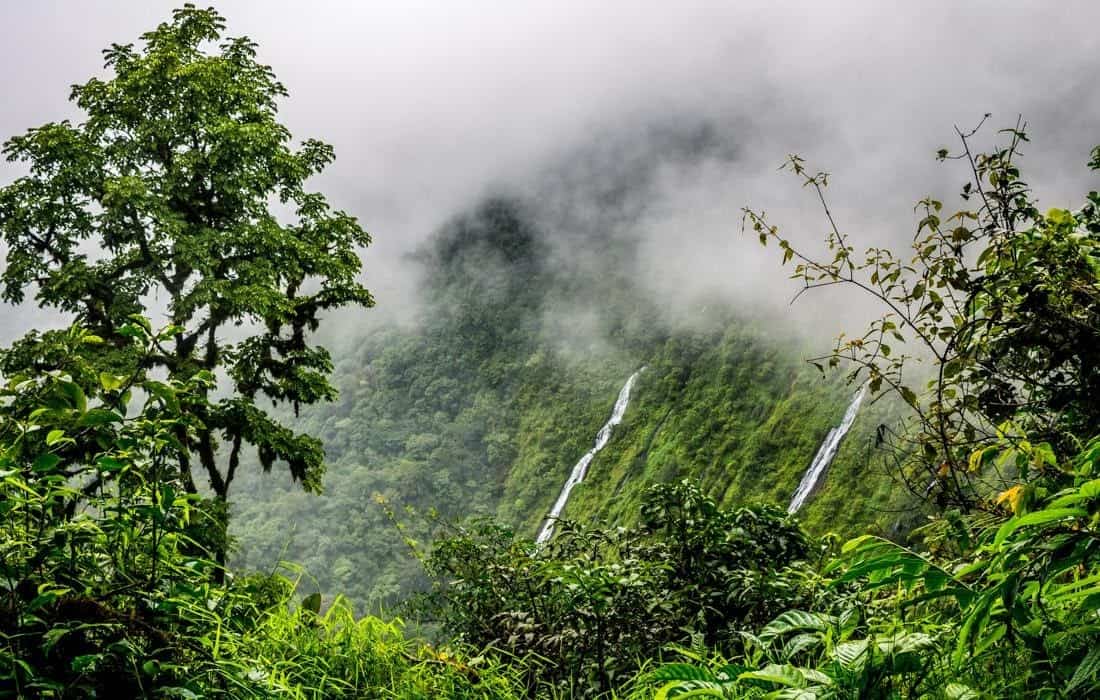
10 Reasons To Visit Equatorial Guinea
Equatorial Guinea is the seventh least visited country in the world. This is not due to a lack of incredible nature or things to see and do. Instead, historically, it has been challenging for tourists to get a visa.
Fortunately for all adventurers and travelers, this is changing. It is now easier than ever to get a visa to travel to the African country of Equatorial Guinea.
This small African country is only 10,830 square miles in size, has a population of 1.309 million, and sits on the Gulf of Guinea between Cameroon and Gabon.
This small gem of Central Africa has one of Africa’s highest per capita incomes, despite its significant inequalities. Equatorial Guinea is one of the most literate countries in all of Africa .
This post may contain affiliate links. Please read our disclosure and privacy policy for more information.
Map of Equatorial Guinea
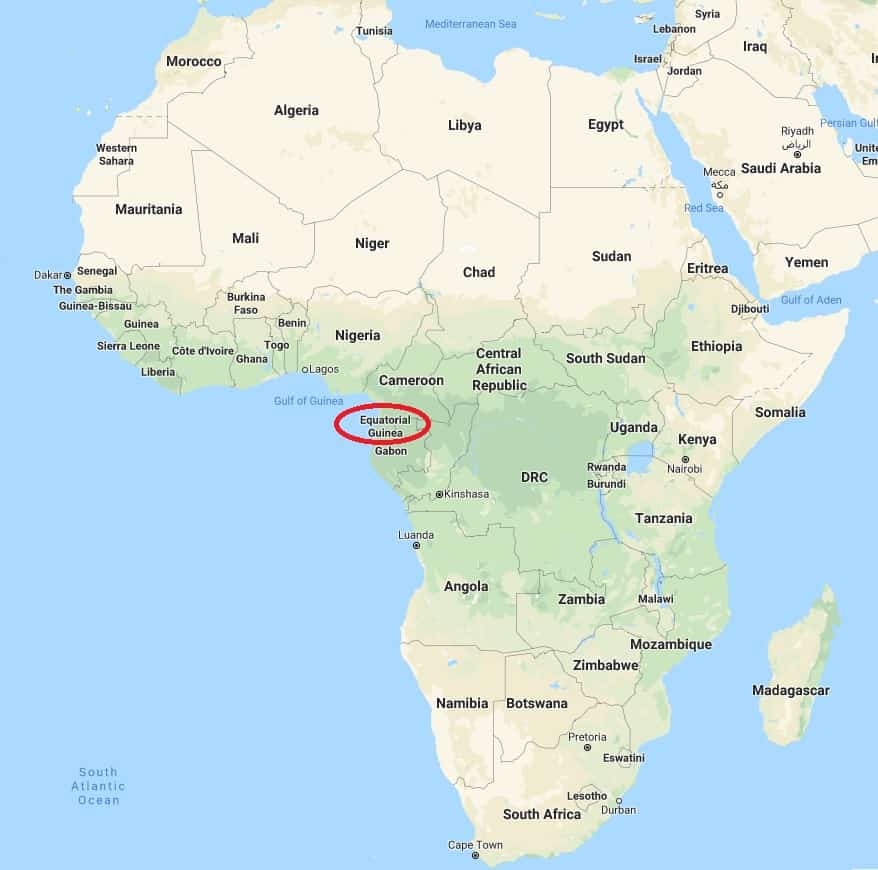
How to Equatorial Guinea?
Equatorial Guinea has surprisingly great flight connections to and from major European cities. From Madrid to Frankfurt or Paris, connecting is very easy. And Turkish Airlines, Royal Air Marroc, and Ethiopian Airlines have recently started flying to Malabo, the county’s capital.
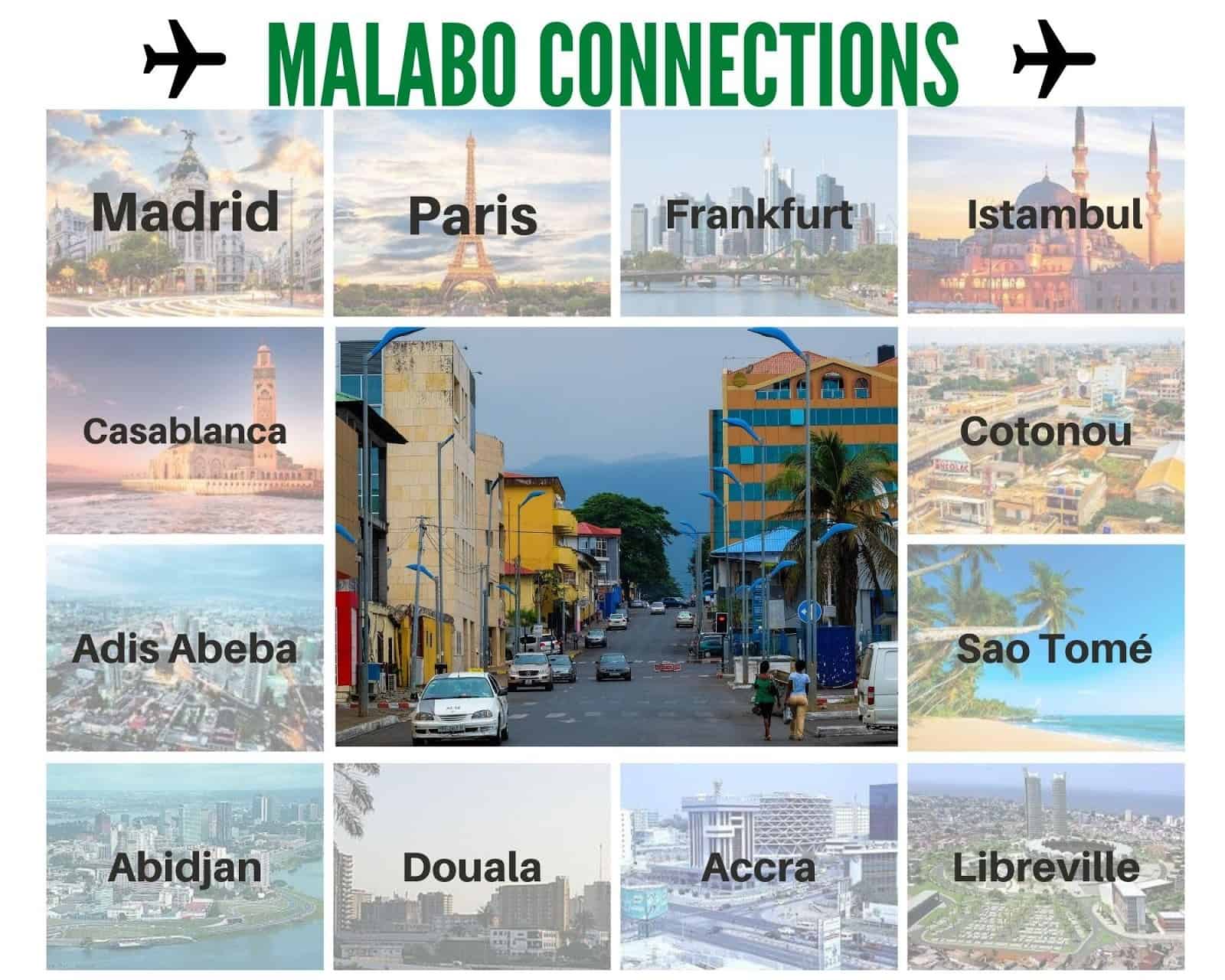
How To Get a Visa for Equatorial Guinea
The government recently began opening up to tourism. Here are the official visa requirements.

You can apply for a Equatorial Guinea visa inadvance here . For American travelers, you must check the U.S. Department of State COVID -19 Guidelines to see if you can travel to any foreign country.
Tourist Permit
Having a visa for Equatorial Guinea is not all you need when traveling to Equatorial Guinea. To visit any tourist attractions, you must obtain an Autorización de Turismo (Tourist Permit) if you plan to access certain protected areas in the country. For example, Ureka, Pico Basilé, Caldera de Luba, etc.
This permit can easily be obtained in person at the Ministerio de Turismo in Malabo II or the Delegación de Cultura y Turismo in Bata.
Unfortunately, it can take a day or two to get a Tourist Permit. To expedite obtaining a Tourist Permit, consider using a travel agency to coordinate getting one before you arrive. Tourist Permits cost approximately $30 – $50.
Tour Operators in Equatorial Guinea
If you plan a trip to Equatorial Guinea, I recommend using Rumbo Malabo Tours . They are a local tourism agency offering the best packages to discover Equatorial Guinea and its deepest secrets. As a result. You’ll be very well taken care of.
10 Reasons Why You Should Visit Equatorial Guinea
1. paradise island of corisco.
The island of Corisco is located 31 miles from the Equatoguinean coast. Its white sandy beaches and crystal clear waters delight all tourists. Getting to Paradise Island is a bit of an adventure. The airport is private, and getting a ticket is within reach of very few. Your only viable option is a slow ferry or a ninety-minute ride on a cayuco (an canoe). Your choice!
2. Ilachi Waterfalls
These waterfalls are more than 155 miles in height and are the largest in the country. Getting to them is a jungle book adventure. If you like to explore undiscovered paths, you should not miss this place. Head to the city of Moka, and from there, hire a local guide to accompany you as you trek through this incredible jungle.
3. Ureka Waterfalls
Ureka is a village located to the south of the island of Bioko. The Ureka vicinity is home to a series of waterfalls and the most beautiful beaches on the island. Despite the rough road to get there, it is worth enjoying a swim in these natural wonders. When you visit it, you will find it hard to believe that this area is so unspoiled.
4. Amazing Churches
It is easy to deduce the different architectural styles in a country with so many different cultures. On the one hand, Equatorial Guinea has the crown jewel, the cathedral of Malabo. Despite a fire in early 2020, it survived and continues to share its magic. On the other hand, classic wooden churches like the Church of Batete or new churches in small villages such as Moka. Last but not least: The Basilica of Mongomo, the second biggest basilica in all of Africa.
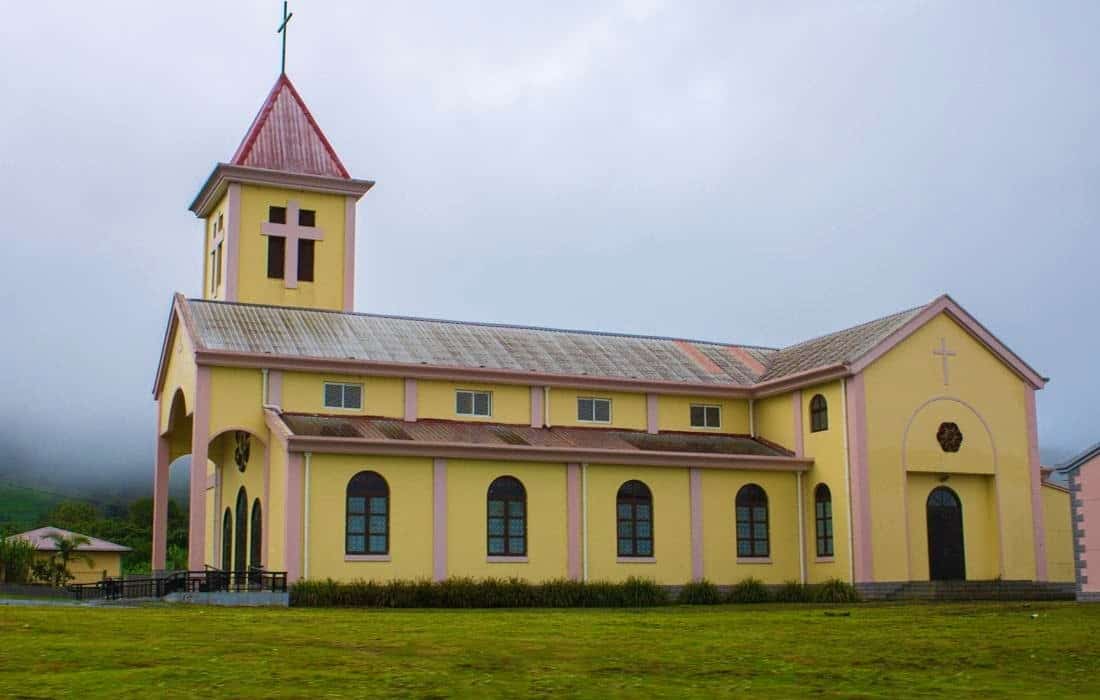
5. Monte Allen National Park
One of the oldest and most protected areas in Monte Allen National Park is 1242 square miles. There is a variety of wildlife, from gorillas, chimpanzees, leopards, and even elephants. Completely wild and free, sighting by humans is not guaranteed.
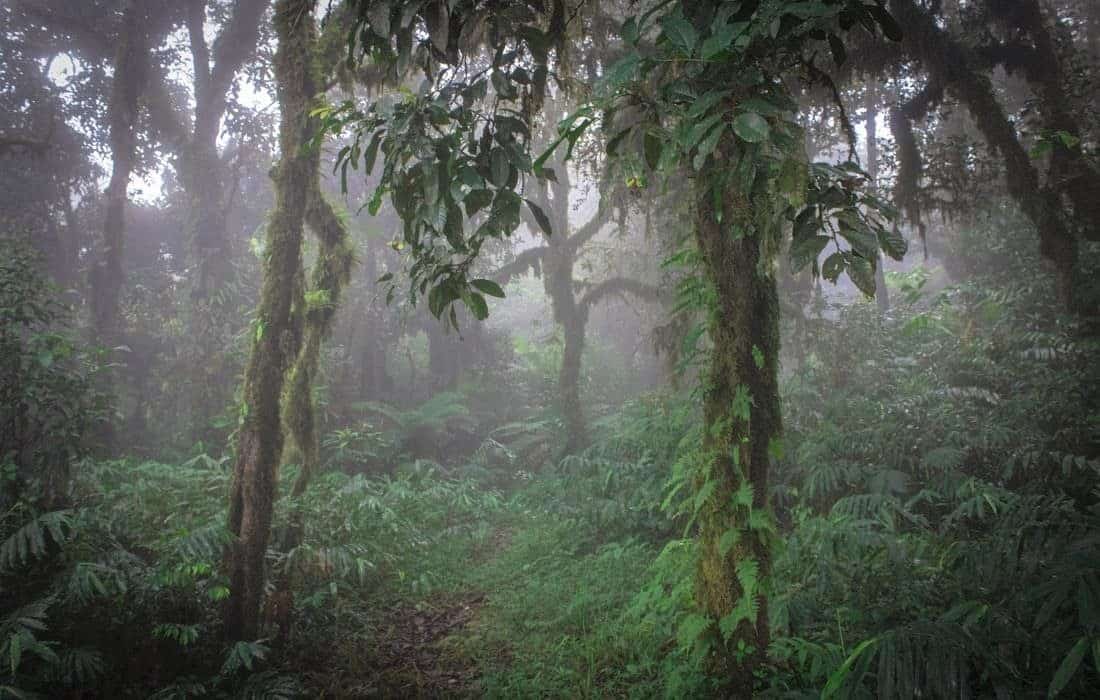
6. Spawn of Leatherback Turtles
Have you ever seen leatherback turtles over 1,100 pounds laying eggs? If not, you will get your chance here. Organizing night excursions to see these giant turtles spawning from November to January is possible. It is an unforgettable experience and highly recommended if you are a nature lover.
7. Lakes in Craters
What happens when a volcano stops being active in a country with a lot of rain? In the photo below, you have the answer. It floods, forming beautiful landscapes. No one dares to enter, but you can observe all its beauty from a distance. There are two lakes in craters! On one side is Lake Biao, and on the other, the great caldera of Luba.
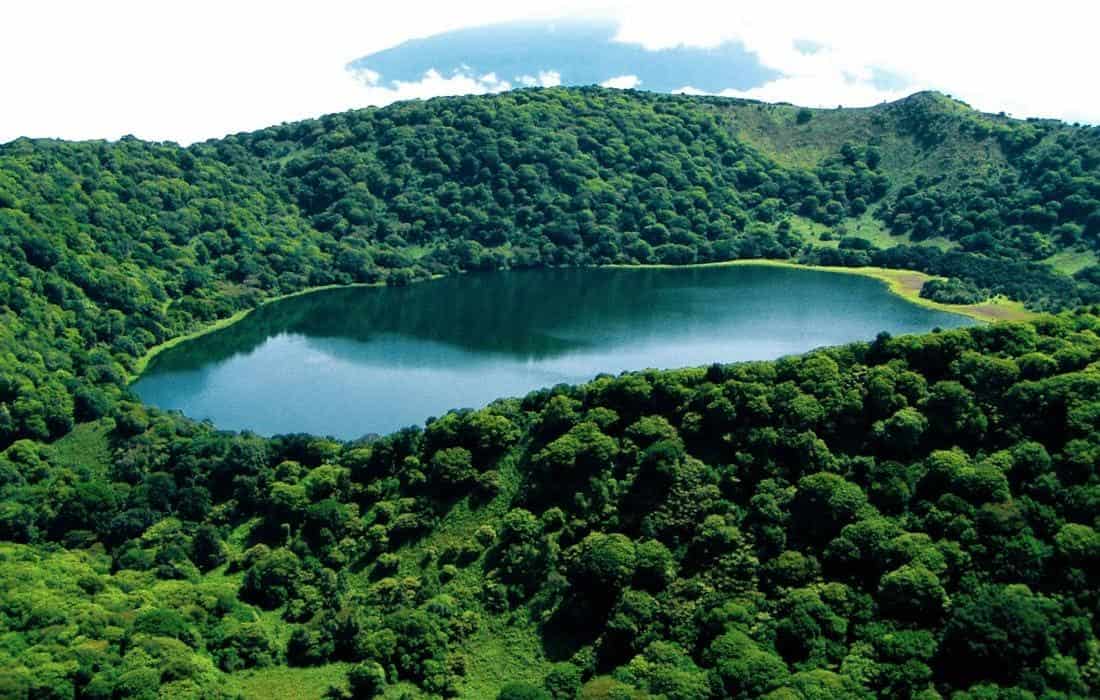
8. Pico Basilé
Basile Peak is the highest point in the country. It is impressive and visible from all points of Bioko Island. On the way to the top, you will see the wonderful Mother Bisila. She is considered by many as the Bubi people’s mother and one of the first black virgins recognized by the Catholic papacy. With her baby on the back, this impressive statue represents one of the most secret stories of the Bubi people. Are you curious? You will have to ask some locals because we will not reveal those secrets here.
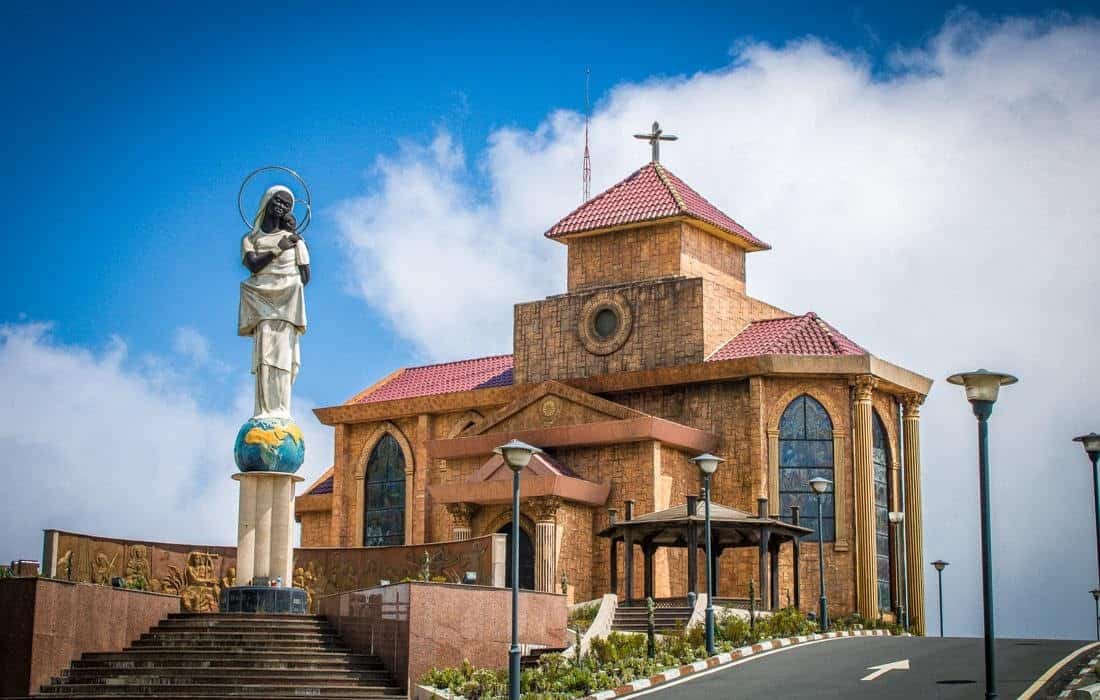
9. the Island of Annobón
This island is called Annobón because it was discovered in Portuguese on New Year’s Day – Anno Bon. This island is proof that a ten-square-mile island needs very little from the outside to be self-sufficient. Visiting this island is a must. Scheduled flights are only available on Fridays and Sundays, and you should expect and plan for frequent cancellations. It is a logistic challenge for any adventurer.
10. Cultural Coexistence
Do you want to understand different tribes or ethnicities? Equatorial Guinea is a country rich in culture. There are more than seven ethnic groups that live in peace and harmony. The capital Malabo is a clear example of peaceful coexistence. You will hear from the official language, Spanish, through the streets, to dialects such as Fang, Bubi, Convé, and the very characteristic Pidgin.
Flag of Equatorial Guinea
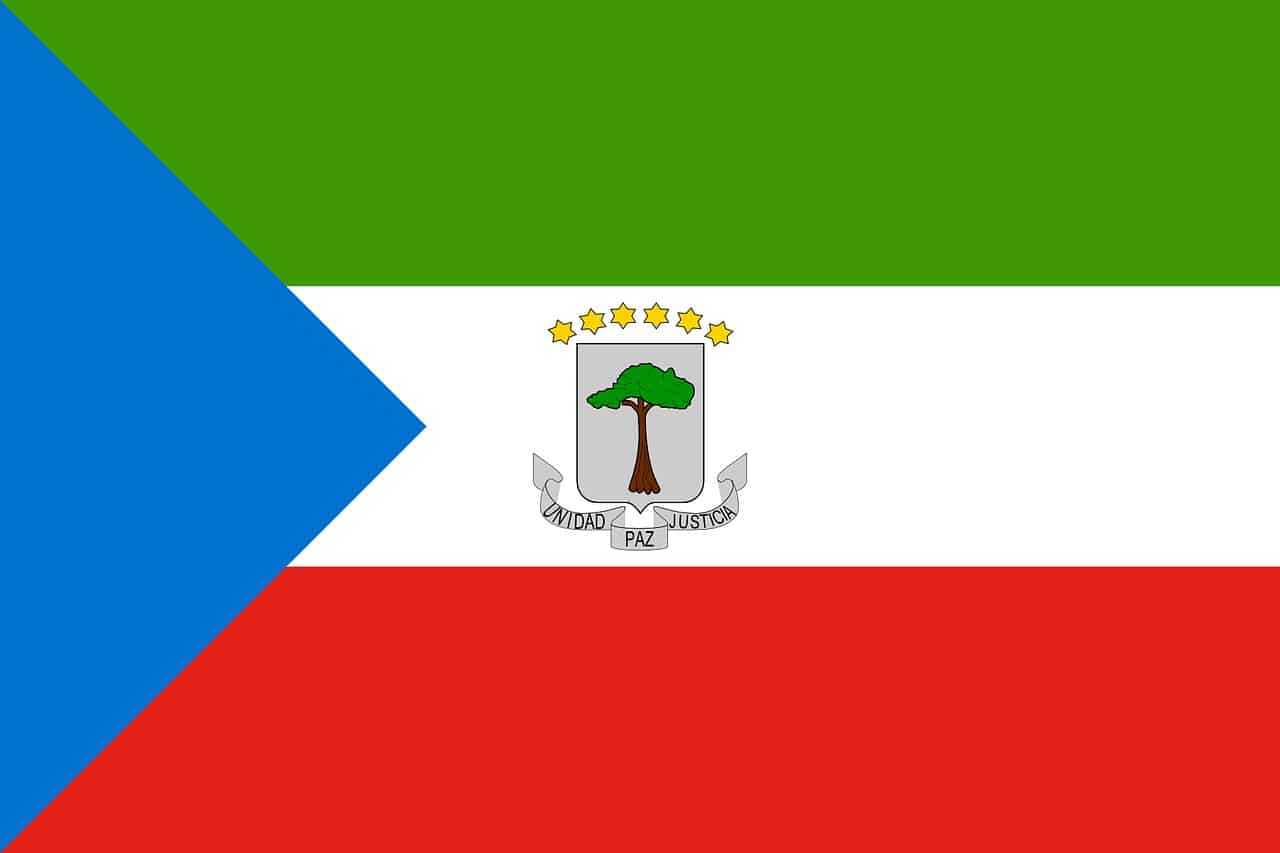
Frequently Asked Question
When is the best time to visit equatorial guinea.
Equatorial Guinea is a country with a dry and rainy season. The dry season usually lasts from November to February. Therefore, the dry season is e most recommended time to visit Equatorial Guinea. However, you can see it anytime, assuming the rain does not condition your life.
What language is spoken in Equatorial Guinea?
Did you know Equatorial Guinea is the only country in Africa with Spanish as its official language? In addition to Spanish, French and Portuguese are official languages but not often used or known. Like every African country, Equatorial Guinea has a variety of co-official local languages.
Is it safe to travel to Equatorial Guinea?
Equatorial Guinea is a relatively safe country. No notable incidents have been recorded in recent times. Crime is heavily controlled by several military and police checkpoints in cities. Very few incidents have been recorded involving tourists or expatriates of any significance.
How to get around Equatorial Guinea
Equatorial Guinea has an admirable infrastructure, with well-paved highways connecting the country’s main cities. Public transport is generally non-existent for tourists and is limited to shared taxis for a modest price. However, if you want adventure and visit nature, it is much cheaper and advisable to contact a tour operator that offers these services.
Is there work for ex-pats?
A common question. Unfortunately, the answer is always the same; getting a well-paid job in a country with an expatriate status is complicated. Your best option is for one of the oil companies operating in the country to hire you from your country. Then fair wages are guaranteed.
Closing Thoughts
Few people will be adventurous enough to visit this small country in Africa. Many will shy away because it’s not as widely known as some of its neighbors. However, many of us will want to explore this lesser-known African county before it becomes overcrowded with tourists.
It is now possible to travel to Equatorial Guinea, take advantage, and add to your next African adventure!
Looking for more posts on Africa Start here:
- Big Five African Wildlife & Conservation Volunteer Experience
- Cape Town Safari – South Africa
- Cage Diving with Great White Sharks
- Swim with Crocodiles in South Africa
- Tanzania – Why You Need A Travel Agent
About the Author:

Héctor Nguema, founder of Rumbo Malabo, a 100% local tourism agency in Equatorial Guinea
Website: https://rumbomalabo.com/en/
Instagram: https://www.instagram.com/rumbomalabo/
Twitter: https://twitter.com/RumboMalabo
We participate in the Amazon Services LLC Associates Program, an affiliate advertising program designed to provide a means for us to earn fees by linking to Amazon.com and affiliated sites.
Share with others!
Nikki Webster is a travel writer who covers how to travel while grinding a day job without breaking the bank. Nikki is always in search of off-the-beaten-track experiences and unique stays. She is particularly fond of Florida and writes extensively about the state. She flies around 60,000 miles annually and has visited 74 countries, 50 states, and six continents. You can read all about her travels at www.britonthemove.com or follow along on Facebook, Pinterest, and Instagram.
Similar Posts

Kelly Park At Rock Springs – The Complete Guide
Florida is a nature explorer’s heaven. While there’s a lot of wildlife in the region, the wildlife doesn’t come without the natural parks they live in. And many of those parks are home to springs. There are almost 900 springs throughout Florida, and one of the best just so happens to be Kelly Park at…

Glamping In Florida At Safari Wilderness
Glamping in Florida, camping in Florida, or boutique camping in Florida. Call it what you will, but this one is not your typical glamping experience. A stay on-site at Safari Wilderness is more safari than glamping. It is the only place in Florida where you can stay on-site on a Safari with the animals in…

Bayport Florida: Why Should You Visit?
Bayport, Florida, is a tiny little coastal town in western Hernando County. It is parallel to the Gulf of Mexico and at the estuary of the Weeki Wachee River. The city served as a supplier of cotton for Hernando County. It provided a port for transportation in the early 1850s until railroad service was added…

Hotel Del Salto at Tequendama Falls – Colombia
Since I saw the photos of Hotel Del Salto at Tequendama Falls, I have wanted to visit this allegedly haunted hotel. Colombia was already on the list for 2019, and I chose Bogota explicitly to see this once a hotel, now a museum. Besides the obvious reasons, like being directly opposite a huge waterfall, the…
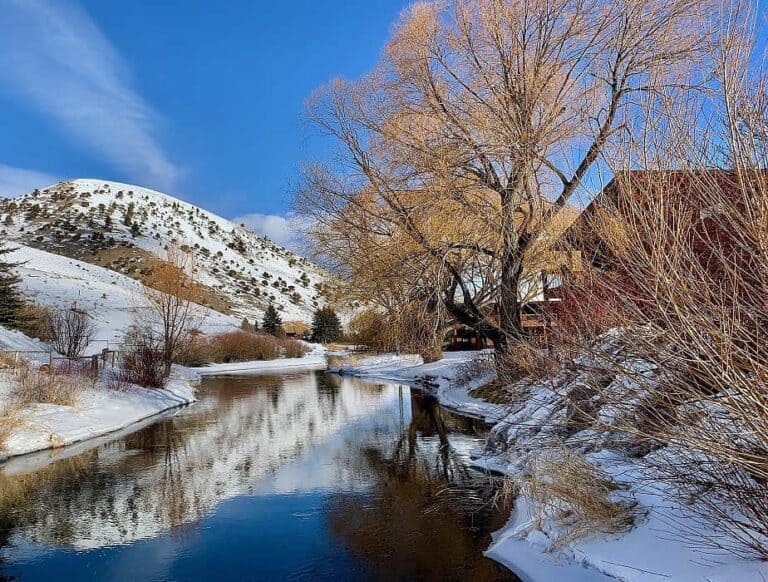
Jackson Hole Wyoming In The Winter – What To Pack
This post may contain affiliate links. Please read our disclosure and privacy policy for more information. Jackson Hole Wyoming in the winter, is spectacular. It’s a time to see Yellowstone at one of its most stunning times. Embarking on a winter getaway to Jackson Hole, Wyoming, promises a picturesque landscape adorned with glistening snow, towering mountains, and…

Aquatica, Orlando Florida: SeaWorld’s Water Park
Waterparks are almost always on the list when it comes to spending a fun summer day with the family. However, it’s important to remember that not all water parks are built similarly. Some are better than others, but Aquatica Florida might be the best one yet! This article will discuss everything you need to know…
Wonderfull information!
Thanks you so much to giving us the opportunity to show the world our amazing country!
You are more than welcome, it’s a great article :)
Leave a Reply Cancel reply
Your email address will not be published. Required fields are marked *
Save my name, email, and website in this browser for the next time I comment.
12 Must-Visit Destinations In Equatorial Guinea
- Last updated Jun 18, 2023
- Difficulty Beginner
- Category United States
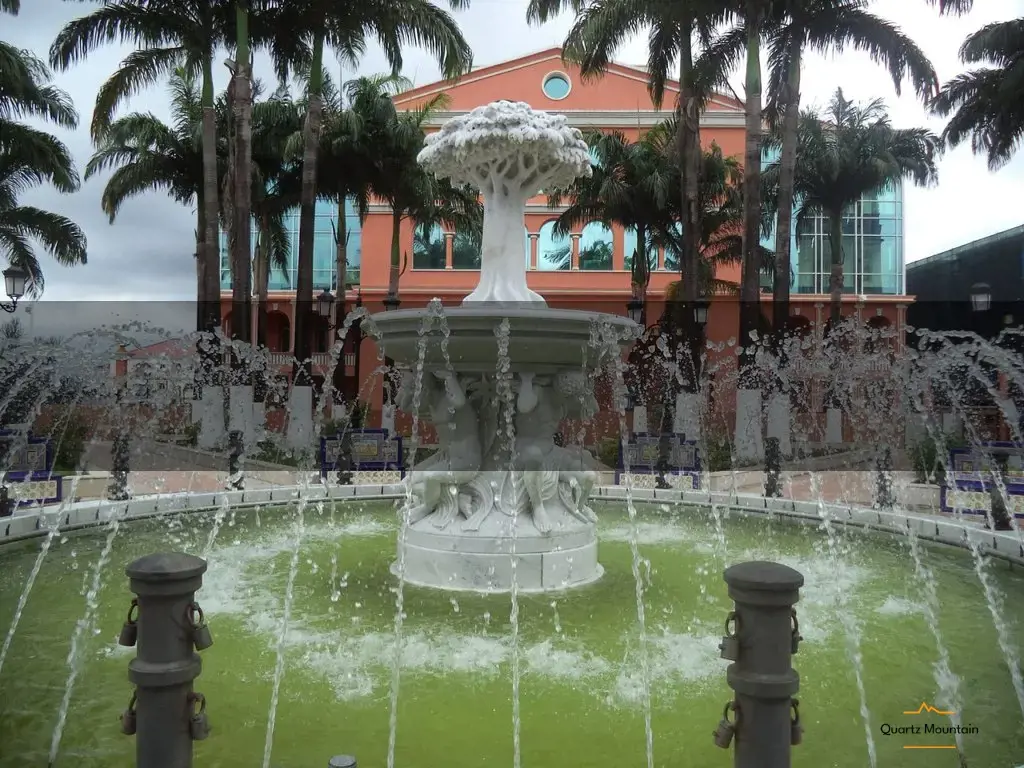
Equatorial Guinea, a small country on the west coast of Africa, may not be on everyone's travel radar, but it certainly should be. With its stunning natural beauty, vibrant culture, and fascinating history, Equatorial Guinea offers a unique and unforgettable travel experience. From its pristine beaches and lush rainforests to its charming colonial towns and vibrant markets, there is something for everyone to enjoy. In this article, we will take a closer look at 12 must-visit destinations in Equatorial Guinea that are sure to leave you in awe. Whether you're a nature lover, history buff, or simply looking for a one-of-a-kind adventure, Equatorial Guinea is the perfect destination to explore. So, pack your bags and get ready to discover the hidden gems of this incredible country!
What You'll Learn
Malabo, the capital city of equatorial guinea, bioko island, known for its beautiful beaches and wildlife, mount cameroon, an active volcano and popular hiking destination, bata, the country's largest city and a center of commerce, rio muni, the mainland region of equatorial guinea with lush rainforests and diverse wildlife, arena blanca beach, a stunning white sand beach on bioko island, basilica of the immaculate conception, a historical church in malabo, black beach, a popular spot for sunbathing and swimming in malabo, elobey grande and elobey chico, two small islands perfect for snorkeling and diving, the santa isabel cathedral, a beautiful gothic-style church in malabo, luba, a seaside town with beautiful beaches and a vibrant local culture, the national park of rio campo, a protected area with diverse wildlife and stunning landscapes.

Originally founded by the British in 1827 as a naval station, Malabo has since undergone significant changes and developments. In 1968, after gaining independence, Equatorial Guinea moved its capital from Bata to Malabo, which was previously known as Santa Isabel. The city was renamed in honor of its first president, Francisco Macías Nguema.
Malabo is known for its beautiful colonial architecture that reflects its history as a former Spanish outpost. Visitors can explore the historic district of Malabo Viejo, which showcases well-preserved buildings from the Spanish colonial era. The Presidential Palace, Cathedral of Santa Isabel, and the Malabo National Museum are among the notable landmarks that bear witness to the city's architectural heritage.
One of the most iconic features of Malabo is its picturesque coastline. Forming part of the Gulf of Guinea, the city is blessed with beautiful beaches such as Arena Blanca and Playa Rod, where visitors can relax and enjoy the tropical climate. In addition, Malabo boasts several parks and green spaces, including the Malabo Botanical Garden, which is home to a wide variety of plant species.
Despite its relatively small size, Malabo offers a vibrant cultural scene. The city hosts various cultural events throughout the year, including the Africa Film Festival and the ECOFAC Bioko Dance Festival. These events celebrate the diversity and richness of Equatorial Guinean culture and attract both local and international participants.
In recent years, Malabo has experienced rapid economic growth driven by the country's substantial oil reserves. This has resulted in infrastructure developments and improvements, making the city more accessible and attractive to both tourists and investors. Modern amenities such as luxury hotels, restaurants, and shopping centers have emerged, providing visitors with a comfortable and convenient experience.
However, despite its progress, Malabo still faces various challenges. The city's population growth has led to urban sprawl, and inadequate infrastructure has resulted in poor living conditions for some residents. Additionally, the city's natural beauty is threatened by pollution and overdevelopment.
In conclusion, Malabo is a captivating city that showcases the unique blend of historical and modern elements in Equatorial Guinea. Its colonial architecture, beautiful beaches, and cultural events make it an appealing destination for travelers seeking to explore the country's rich heritage. However, the city also faces challenges that need to be addressed to ensure a sustainable and prosperous future.
14 Must-Do Things in Cameroon for Adventure-Seekers and Nature Lovers
You may want to see also
Bioko Island, located off the coast of Equatorial Guinea, is known for its beautiful beaches and abundant wildlife. This small island, also known as Fernando Pó, offers a unique destination for nature lovers and beach enthusiasts alike.
One of the main draws of Bioko Island is its stunning beaches. The island boasts a number of pristine, white sandy beaches that are perfect for swimming, sunbathing, and relaxing. Popular beach destinations on the island include Ureka Beach, which is known for its calm waters and soft sand, and Luba Beach, where visitors can enjoy beautiful sunsets and picturesque views of the Atlantic Ocean.
Bioko Island is also home to a diverse range of wildlife. The island's tropical rainforests are teeming with a variety of plant and animal species, making it a haven for nature enthusiasts and eco-tourists. Visitors to the island can embark on guided hikes through the rainforest, where they may encounter monkeys, birds, and other fascinating wildlife.
One of the most iconic species on Bioko Island is the drill, a type of primate that is native to Central Africa. The island is home to the largest population of drills in the world, making it a prime destination for wildlife enthusiasts and researchers. Visitors to the island can learn more about these impressive creatures through guided tours and educational programs.
In addition to its natural beauty and wildlife, Bioko Island also offers a number of cultural and historical attractions. Visitors can explore the island's capital city, Malabo, which features a mix of Spanish colonial architecture and modern development. The city is home to a number of museums and cultural sites, such as the Malabo National Museum, where visitors can learn about the island's history and culture.
Overall, Bioko Island is a hidden gem in Equatorial Guinea, offering a combination of stunning beaches, diverse wildlife, and rich cultural heritage. Whether you're looking to relax on the beach, explore the rainforest, or immerse yourself in the island's history, Bioko Island has something to offer every type of traveler.
12 Fun Things to Do in Solana Beach
Mount Cameroon is the tallest mountain in Equatorial Guinea and one of the most popular hiking destinations in the country. Located on the west coast of Central Africa, Mount Cameroon is an active volcano that has attracted adventurous travelers and outdoor enthusiasts from around the world.
Rising to an impressive height of 4,040 meters (13,255 feet), Mount Cameroon towers over the coastal city of Limbe and provides stunning views of the surrounding landscape. The mountain is part of the larger Cameroon Volcanic Line, which stretches from the Gulf of Guinea to Lake Chad, and is known for its rich volcanic activity.
Hiking Mount Cameroon is a challenging and rewarding experience. The mountain offers a variety of routes for hikers of different skill levels, ranging from moderate to strenuous. The most popular route to the summit is the Mann's Spring Route, which starts from the town of Buea and takes approximately three to four days to complete.
During the ascent, hikers will encounter diverse ecosystems, including lush rainforests, grasslands, and alpine meadows. The trail is also home to a wide range of flora and fauna, including rare plant species and endemic wildlife. On clear days, hikers can enjoy breathtaking panoramic views of the coastline, neighboring islands, and even Mount Cameroon's own volcanic crater.
Reaching the summit of Mount Cameroon is a feat in itself, but it is not without its challenges. The weather on the mountain can be unpredictable, with abrupt changes in temperature and the possibility of rain or fog. It is essential for hikers to come prepared with appropriate gear, including sturdy hiking boots, warm clothing, and rain gear.
Hiking Mount Cameroon requires proper physical conditioning and acclimatization to the altitude. It is recommended for hikers to spend a few days in Buea or Limbe to adjust to the elevation before attempting the climb. Hiring a local guide is also highly recommended, as they are familiar with the terrain and can provide valuable assistance and guidance throughout the hike.
Despite the challenges, the experience of hiking Mount Cameroon is truly unforgettable. The sense of accomplishment upon reaching the summit and witnessing the awe-inspiring views is unparalleled. The mountain offers a unique opportunity to explore Equatorial Guinea's natural beauty and immerse oneself in its rich geological and cultural history.
In addition to hiking, Mount Cameroon also attracts avid mountain bikers and rock climbers who seek adventure and adrenaline. The rugged terrain and diverse landscapes provide a thrilling playground for these outdoor activities.
For those who prefer a less strenuous experience, there are also opportunities for nature walks and birdwatching around the mountain's base. The surrounding rainforests are home to a variety of bird species, including the elusive grey-necked picathartes. Guided tours are available for visitors who wish to explore the area's natural wonders and learn more about its biodiversity.
Overall, Mount Cameroon is more than just a mountain – it is a symbol of natural beauty, resilience, and adventure. Whether you are an experienced hiker or a curious traveler looking for a new challenge, exploring Mount Cameroon will leave you with memories that will last a lifetime.
12 Best Things to Do in Tewksbury for a Fun-Filled Trip
Located on the coast of Equatorial Guinea, Bata is the country's largest city and a bustling center of commerce. With a population of around 250,000 people, Bata serves as an important economic hub and plays a key role in the development of Equatorial Guinea.
Bata is situated on the mainland, opposite the island of Bioko, where the country's capital, Malabo, is located. The city benefits from its strategic location, as it serves as a major port for both imports and exports. The port of Bata handles a significant amount of the country's maritime trade, including the export of oil, timber, and agricultural products.
The city is known for its vibrant markets, where traders from all over the country gather to sell their goods. The marketplaces in Bata are filled with a wide variety of products, including fresh produce, household items, clothing, and handicrafts. These markets are not only a hub of economic activity but also a vibrant display of the country's rich cultural heritage.
Bata is also home to a number of industries, including manufacturing and construction. The city has a significant presence of textile factories, producing garments for both local consumption and export. Additionally, the construction sector in Bata has been booming, leading to the development of modern infrastructure such as hotels, shopping centers, and office buildings.
The city's infrastructure has improved significantly in recent years, with the expansion of road networks and the construction of new bridges. This has facilitated better connectivity within the city and improved transportation of goods and services to other regions of the country.
In terms of education and healthcare, Bata is home to several schools, colleges, and health centers. The city has made notable progress in these areas, with the government investing in educational institutions and healthcare facilities. This has led to increased access to quality education and healthcare services for the residents of Bata.
Tourism also plays a significant role in Bata's economy. The city boasts beautiful beaches, lush forests, and a diverse range of wildlife, attracting both domestic and international tourists. The government has been investing in the development of tourism infrastructure, including hotels and recreational facilities, to further boost the sector.
Overall, Bata is a vibrant city that serves as the economic heart of Equatorial Guinea. With its strategic location, thriving markets, and diverse industries, Bata continues to contribute significantly to the country's growth and development. The city's progress in infrastructure, education, healthcare, and tourism highlights its commitment to improving the quality of life for its residents and attracting investment opportunities.
12 Fun Things to Do in Glen Allen, VA
Equatorial Guinea is a small country located in Central Africa, known for its stunning natural beauty and rich biodiversity. One of the most captivating regions in Equatorial Guinea is Rio Muni, the mainland region that boasts lush rainforests and diverse wildlife.
Rio Muni is the largest and most populous region in Equatorial Guinea, covering an area of approximately 26,000 square kilometers. It is bordered by Cameroon to the north and Gabon to the south, and it is divided into seven provinces. This region is home to a significant portion of Equatorial Guinea's population and is characterized by its tropical climate and dense rainforests.
The rainforests in Rio Muni are a haven for a wide variety of plant and animal species. As you venture into these forests, you will be amazed by the sheer abundance of life that surrounds you. The forests are home to numerous species of monkeys, including the western lowland gorilla, chimpanzees, and mandrills. These primates swing through the treetops and can often be heard vocalizing their distinctive calls.
In addition to primates, Rio Muni is home to an array of other wildlife, such as elephants, hippos, crocodiles, and numerous species of birds. Birdwatchers will be delighted to spot colorful species like the Grey Parrot, African Fish Eagle, and African Pied Hornbill. The region's rivers and lakes also offer the perfect habitat for an array of fish and other aquatic species.
Exploring the rainforests of Rio Muni is an adventure in itself. You can embark on guided hikes or join organized wildlife tours to witness the incredible diversity of flora and fauna. The lush vegetation and towering trees create a surreal atmosphere, and the sounds of wildlife fill the air. Be prepared to encounter breathtaking waterfalls, crystal-clear streams, and hidden caves as you navigate the dense forests.
Apart from its natural wonders, Rio Muni also has a rich cultural heritage. The region is home to various ethnic groups, each with its own unique traditions and customs. Visitors can immerse themselves in the local culture by interacting with the indigenous people, witnessing traditional dances and ceremonies, and sampling delicious local cuisine.
Although Rio Muni is a relatively untouched paradise, conservation efforts are being made to protect its fragile ecosystem. The government and various non-governmental organizations are working together to preserve the rainforests and safeguard the wildlife within. Sustainable eco-tourism initiatives have also been put in place to ensure that visitors can experience the beauty of Rio Muni while minimizing their impact on the environment.
In conclusion, Rio Muni is a treasure trove of natural wonders, with its lush rainforests, diverse wildlife, and vibrant culture. Exploring this mainland region of Equatorial Guinea is a truly unforgettable experience that allows you to connect with nature at its finest. Whether you are an adventure seeker, a nature enthusiast, or a cultural explorer, Rio Muni has something to offer everyone. So, pack your bags, grab your camera, and get ready to embark on an incredible journey into the heart of Equatorial Guinea's wilderness.
13 Fun Things to Do in Marksville, Louisiana
Located on Bioko Island in Equatorial Guinea, Arena Blanca Beach is a stunning white sand beach that offers visitors a truly tropical paradise experience. With its crystal clear turquoise water, swaying palm trees, and breathtaking views, it is no wonder that Arena Blanca Beach is regarded as one of the most beautiful beaches in Equatorial Guinea.
The beach is easily accessible and is situated just a short drive away from the capital city of Malabo. Travelers can reach the beach either by car or by taking a local taxi. The journey to Arena Blanca Beach itself is a picturesque one, as visitors will pass through lush green landscapes and charming coastal towns.
Once at the beach, visitors are greeted with a magnificent sight. The white sand stretches for miles, creating a contrast against the deep blue sea. The beach is well-maintained and clean, with clear pathways leading to various areas of interest.
One of the highlights of Arena Blanca Beach is its stunning coral reefs. Snorkeling and diving enthusiasts can explore the vibrant underwater world and observe the diverse marine life that calls this beach home. Colorful fish, sea turtles, and even dolphins can often be seen during snorkeling or diving excursions.
For those who prefer to stay on land, Arena Blanca Beach offers plenty of opportunities for relaxation and recreation. Sun loungers and beach umbrellas are available for rent, allowing visitors to soak up the sun or seek shade as they please. The calm and warm waters are perfect for swimming, and families can enjoy building sandcastles or playing beach volleyball.
Aside from its natural beauty, Arena Blanca Beach also offers amenities to enhance visitors' experiences. There are several beachside restaurants and bars that offer a variety of delicious local cuisine and refreshing drinks. Visitors can savor fresh seafood dishes while enjoying panoramic views of the beach.
It is important for visitors to note that Equatorial Guinea has a tropical climate, with high temperatures and humidity year-round. It is advisable to bring sunscreen, hats, and other protective gear to ensure a comfortable experience at Arena Blanca Beach.
All in all, Arena Blanca Beach is a must-visit destination for beach lovers and nature enthusiasts. With its breathtaking beauty, pristine white sand, and diverse marine life, it offers a unique and unforgettable tropical getaway. Whether you are looking to relax on the beach, explore underwater wonders, or indulge in delicious cuisine, Arena Blanca Beach has something for everyone.
14 Unique Things to Do in Susquehanna, PA
The Basilica of the Immaculate Conception is a historical church located in Malabo, the capital city of Equatorial Guinea. This beautiful church is an important landmark in the country and serves as a symbol of the Catholic faith.
The Basilica of the Immaculate Conception was built in 1897 and is one of the oldest churches in Equatorial Guinea. It was constructed by Spanish colonizers and has since become a significant religious and cultural site for both locals and tourists.
The church is known for its stunning architecture, which combines various styles including Romanesque and Gothic influences. The exterior of the basilica features intricately carved stone detailing and a grand entrance. Inside, visitors are greeted by high vaulted ceilings and beautiful stained glass windows that depict biblical scenes.
One of the most notable features of the Basilica of the Immaculate Conception is its towering spires, which can be seen from various points in the city. These spires add to the grandeur of the church and make it a truly remarkable sight.
The church is dedicated to the Immaculate Conception, which is a central belief of the Catholic faith. This doctrine holds that the Virgin Mary was conceived without sin and was chosen by God to be the mother of Jesus. The Basilica of the Immaculate Conception is a place of worship and pilgrimage for Catholics in Equatorial Guinea, who come to pray and seek spiritual guidance.
In addition to its religious significance, the Basilica of the Immaculate Conception also has historical importance. It has witnessed various events and has served as a gathering place for the local community throughout the years. The church has survived multiple renovations and has stood as a testament to the resilience of the Catholic faith in Equatorial Guinea.
Visitors to the basilica can attend mass or simply admire the beautiful architecture and artwork inside. The church is open to all and welcomes people of different faiths to experience the spiritual and cultural heritage it represents.
The Basilica of the Immaculate Conception is not only a religious site but also a historical and architectural gem in Equatorial Guinea. As one of the oldest churches in the country, it holds a special place in the hearts of the local community and continues to be a source of inspiration and faith.
Whether you are a devout Catholic or simply interested in history and architecture, a visit to the Basilica of the Immaculate Conception is a must when in Equatorial Guinea. This magnificent church will leave you in awe of its beauty and the rich heritage it represents.
11 Fun Things to Do in the Town of West Texas
Equatorial Guinea is a small country located on the west coast of Central Africa. It is known for its beautiful beaches and stunning natural scenery. One of the most popular spots for sunbathing and swimming in Equatorial Guinea is Black Beach, located in the capital city of Malabo.
Black Beach is a long stretch of sandy shoreline that is bordered by lush palm trees and clear turquoise waters. The beach gets its name from the dark-colored volcanic sand that covers its shores. This unique feature gives Black Beach a distinctive look and makes it a favorite destination for locals and tourists alike.
Visitors to Black Beach can enjoy a variety of activities, from relaxing on the sand and working on their tan to taking a refreshing dip in the ocean. The calm and warm waters of the beach make it an ideal spot for swimming and play, especially for families with young children. Lifeguards are present on the beach to ensure the safety of all visitors.
For those seeking some adventure, Black Beach also offers opportunities for water sports such as snorkeling and diving. The crystal-clear waters allow for excellent visibility, and the underwater world is teeming with colorful coral reefs and a wide variety of marine life. Scuba diving enthusiasts can explore the depths of the ocean and discover hidden treasures beneath the surface.
Aside from its natural beauty, Black Beach also boasts a vibrant atmosphere with beachfront bars and restaurants. Tourists can enjoy refreshing cocktails and delicious seafood while soaking up the sun and taking in the breathtaking views of the ocean. The beach is also a popular spot for picnics and barbecues, as there are designated areas with tables and grills available for use.
In addition to its recreational activities, Black Beach is also known for hosting various events and festivals throughout the year. These events range from live music performances to beach volleyball tournaments, attracting both locals and visitors alike. The energetic atmosphere and lively entertainment make Black Beach a hub of excitement and socializing.
Overall, Black Beach in Malabo, Equatorial Guinea, is a must-visit destination for beach lovers and nature enthusiasts. Its natural beauty, warm waters, and range of activities make it a perfect spot for sunbathing, swimming, and exploring the underwater world. Whether you are looking for relaxation or adventure, Black Beach has something for everyone. So grab your towel, sunscreen, and a sense of adventure, and make your way to Black Beach for an unforgettable beach experience in Equatorial Guinea.
12 Fun Activities to Check Out in McHenry County This Weekend
Located off the coast of Equatorial Guinea, Elobey Grande and Elobey Chico are two small islands that offer a paradise for snorkeling and diving enthusiasts. These islands, also known as the Elobey Islands, are a hidden gem that is often overlooked by tourists, making it a perfect destination for those seeking a more peaceful and untouched underwater experience.
Elobey Grande and Elobey Chico are both uninhabited islands, which adds to their charm and untouched beauty. Surrounded by crystal-clear waters and vibrant coral reefs, these islands offer a diverse and rich marine ecosystem that is teeming with colorful fish, sea turtles, and various other sea creatures. The pristine condition of the underwater world here is a testament to the efforts made by the government of Equatorial Guinea to protect its natural heritage.
Snorkeling in Elobey Grande and Elobey Chico is an unforgettable experience. From the moment you dip your head into the water, you will be greeted by a kaleidoscope of colors and an array of fascinating marine life. The reefs are home to numerous species of tropical fish, such as parrotfish, angelfish, and clownfish, which can be spotted darting in and out of the coral formations. If you are lucky, you may even encounter a gentle green sea turtle gracefully gliding through the water.
For more adventurous divers, Elobey Grande and Elobey Chico also offer excellent diving opportunities. The islands are surrounded by several dive sites that cater to divers of all levels of experience. Whether you are a beginner or an advanced diver, there is something for everyone in these waters. The underwater world here is alive with vibrant soft and hard corals, providing a stunning backdrop for your underwater explorations. You might even come across larger marine creatures like barracudas, whitetip reef sharks, and rays as you dive deeper into the depths.
In addition to the incredible snorkeling and diving experiences, Elobey Grande and Elobey Chico also offer stunning natural landscapes above the water. The islands are covered in lush vegetation, with palm trees swaying in the breeze, creating a picturesque paradise. You can take a leisurely stroll along the pristine beaches, basking in the warm Equatorial Guinea sun and enjoying the peacefulness of these remote islands.
To reach the Elobey Islands, you can take a boat from the mainland of Equatorial Guinea. The journey is relatively short, and the scenic boat ride allows you to fully appreciate the beauty of the untouched coastline. Once you arrive at the islands, you will be struck by the untouched nature and the peaceful atmosphere that surrounds you. With no urban development or crowds of tourists, Elobey Grande and Elobey Chico offer a true escape from the hustle and bustle of everyday life.
If you are a snorkeling or diving enthusiast looking for a unique and untouched underwater experience, look no further than the Elobey Islands in Equatorial Guinea. With their vibrant coral reefs, diverse marine life, and picturesque landscapes, Elobey Grande and Elobey Chico are a true paradise for nature lovers. Embark on an adventure to these hidden gems and immerse yourself in the beauty of Equatorial Guinea's underwater world.
12 Fun Activities to Try in Tri Cities TN This Weekend
The Santa Isabel Cathedral, located in the capital city of Malabo, is one of the most beautiful and significant landmarks in Equatorial Guinea. This stunning gothic-style church holds great historical and cultural significance, attracting both locals and tourists alike.
Built during the Spanish colonial era in the late 19th century, the Santa Isabel Cathedral is a testament to the rich history of Equatorial Guinea. Its construction was completed in 1897, making it one of the oldest churches in the country. It was initially built to serve as a place of worship for the Spanish colonial rulers and the local Catholic community.
The Cathedral's architectural design is a blend of Gothic and Mediterranean styles, reflecting the influences of Spanish and Portuguese architecture. Its grand facade features intricate detailing, with towering spires and arched windows that add to its grandeur. The interior of the cathedral is equally impressive, with beautiful stained glass windows and ornate altars.
The Santa Isabel Cathedral is not only a place of worship but also an important symbol of the Catholic faith in Equatorial Guinea. As a predominantly Catholic country, the cathedral holds significant religious events and ceremonies. It is the seat of the Roman Catholic Diocese of Malabo and has hosted various important religious events, including the ordination of bishops and the celebration of Easter.
Apart from its religious significance, the Santa Isabel Cathedral is also a popular tourist attraction. It offers visitors a glimpse into the country's colonial past and the architectural beauty of the era. The cathedral's serene ambiance provides a peaceful respite from the bustling streets of Malabo, and its stunning architecture provides ample photo opportunities.
Inside the cathedral, visitors can marvel at the beautiful stained glass windows that depict religious scenes and motifs. The high ceilings and ornate decorations create a sense of awe and reverence. The cathedral also houses several artifacts and religious artworks, further adding to its cultural significance.
Visiting the Santa Isabel Cathedral is a must for any traveler exploring Equatorial Guinea. Its historical and architectural beauty make it a captivating destination for both religious and cultural enthusiasts. The cathedral is open to the public, allowing visitors to attend mass and experience the spiritual atmosphere within its walls.
In conclusion, the Santa Isabel Cathedral in Malabo is a beautiful gothic-style church that holds great historical and cultural importance in Equatorial Guinea. Its stunning architecture and religious significance make it a must-visit destination for both locals and tourists. Whether you are seeking a spiritual experience or simply want to appreciate the country's rich history, the Santa Isabel Cathedral is a place not to be missed.
12 Free Things to Do in Tempe, Arizona.
Nestled along the coast of Equatorial Guinea, Luba is a picturesque town that offers visitors the perfect combination of natural beauty and vibrant local culture. With its stunning beaches and rich history, Luba has become a popular destination for both tourists and locals alike.
One of the main attractions of Luba is its beautiful beaches. The town is blessed with pristine shores and crystal-clear waters, making it an ideal spot for sunbathing, swimming, and water sports. Whether you're looking to relax under the shade of a palm tree or take a dip in the refreshing ocean, Luba's beaches have something for everyone. Some of the most popular beaches in the area include Malabo Beach, Arena Blanca, and Playa Grande.
Aside from its natural beauty, Luba is also known for its vibrant local culture. The town has a strong sense of community, and its residents take great pride in their cultural heritage. Visitors can immerse themselves in the local way of life by exploring the town's lively markets, sampling traditional cuisine, and experiencing traditional music and dance performances. Luba is also home to several cultural festivals throughout the year, where visitors can witness traditional ceremonies and celebrations.
Another highlight of Luba is its rich history. The town has a number of historical landmarks and sites that offer a glimpse into Equatorial Guinea's past. One such landmark is the Luba Crater National Park, which features a volcanic crater and tropical rainforest. The park is home to diverse flora and fauna, including several rare and endangered species. For history buffs, a visit to the Luba National Museum is a must. The museum houses a collection of artifacts and exhibits that showcase the country's history, from pre-colonial times to the present.
In addition to its natural beauty and vibrant culture, Luba also offers a range of outdoor activities for adventure enthusiasts. Visitors can explore the surrounding landscapes through hiking and nature walks, or embark on a boat tour to discover the coastal beauty of the area. The town is also a popular spot for fishing, with ample opportunities for both recreational and sport fishing.
Whether you're looking for a relaxing beach getaway or an immersive cultural experience, Luba has it all. With its beautiful beaches, vibrant local culture, and rich history, this seaside town in Equatorial Guinea is sure to leave a lasting impression on every visitor. So pack your bags and get ready to discover the beauty of Luba!
10 Fun Things to Do in Avalon Beach
Equatorial Guinea is a small country located on the west coast of Central Africa. Despite its size, the country is home to some remarkable natural wonders, including the National Park of Rio Campo. This protected area is renowned for its diverse wildlife and stunning landscapes, making it a must-visit destination for nature enthusiasts.
Rio Campo National Park covers an area of approximately 300 square kilometers and is situated in the southern part of Equatorial Guinea. The park is a sanctuary for numerous species of animals and plants, making it a biodiversity hotspot in the region. The lush forests, rivers, and wetlands of the park provide a thriving habitat for a wide range of species.
One of the main draws of the National Park of Rio Campo is its rich birdlife. Over 200 species of birds can be found here, including the black stork, African fish eagle, African grey parrot, and the iconic grey-necked picathartes. Birdwatchers from around the world flock to the park to catch a glimpse of these magnificent creatures and to listen to their melodious calls.
In addition to birds, the park is also home to several mammal species, including forest elephants, chimpanzees, drills, and red colobus monkeys. These animals can often be spotted roaming freely in their natural habitat, presenting visitors with a unique opportunity to observe them up close. The park's rivers and wetlands are also inhabited by several species of reptiles and amphibians, such as crocodiles, turtles, and frogs.
Apart from its diverse wildlife, the National Park of Rio Campo offers breathtaking landscapes that are a feast for the eyes. The park encompasses rolling hills, dense forests, sparkling rivers, and picturesque waterfalls. Visitors can explore the park on foot, following its well-maintained trails that lead to various viewpoints and scenic spots. Whether it's hiking through the rainforest or admiring the cascading waterfalls, there is something for every nature lover in this spectacular park.
To ensure the preservation of its unique flora and fauna, the National Park of Rio Campo has implemented strict conservation measures. The park is rigorously protected, and visitors are required to follow certain guidelines to minimize their impact on the environment. Some activities, such as hunting and fishing, are strictly prohibited within the park premises.
For those who wish to delve deeper into the wonders of the National Park of Rio Campo, guided tours are available. Knowledgeable guides lead visitors through the park, providing valuable insights into its ecology, history, and conservation efforts. These tours offer a comprehensive experience, allowing visitors to learn, appreciate, and connect with the natural beauty of this exceptional park.
In conclusion, the National Park of Rio Campo in Equatorial Guinea is a hidden gem waiting to be discovered. Its diverse wildlife, stunning landscapes, and conservation efforts make it an essential destination for anyone passionate about nature. Whether you're an avid birdwatcher, a wildlife enthusiast, or just someone seeking tranquility amidst nature, this park offers an experience you won't soon forget.
10 Amazing Things to Do Near Inman Park
Frequently asked questions.
There are several must-visit places in Equatorial Guinea. Some popular ones include:
- Malabo: The capital city of Equatorial Guinea, known for its colonial architecture, vibrant markets, and beautiful coastline.
- Bata: The largest city in Equatorial Guinea, offering a mix of modern attractions and traditional African culture.
- Monte Alen National Park: A stunning national park known for its diverse wildlife, hiking trails, and breathtaking scenery.
- Annobon Island: A remote island known for its pristine beaches, clear waters, and opportunities for snorkeling and scuba diving.
- Arena Blanca: A beautiful white sand beach located near Malabo, perfect for swimming, sunbathing, and beach picnics.
Yes, Equatorial Guinea has a rich cultural heritage that can be experienced through various activities. Some popular cultural activities include:
- Traditional music and dance performances: You can witness traditional music and dance performances showcasing the unique cultural traditions of Equatorial Guinea.
- Arts and crafts: Equatorial Guinea has a vibrant arts and crafts scene, with local artisans creating beautiful pottery, masks, and sculptures that reflect the country's cultural identity.
- Festivals: Equatorial Guinea hosts several festivals throughout the year, such as the Bantu Cultural Festival and the Independence Day celebrations, where you can experience the country's cultural traditions firsthand.
- Traditional cuisine: Trying traditional Equatorial Guinean dishes, such as Ekwang (pounded cocoyam leaves with meat) or Fufu (a starchy dough-like dish), is a great way to experience the local culinary culture.
Equatorial Guinea offers a range of outdoor activities for nature lovers and adventure enthusiasts. Some popular outdoor activities include:
- Wildlife watching: Explore the diverse wildlife of Equatorial Guinea by visiting national parks such as Monte Alen National Park or Pico Basilé National Park where you can spot various species of birds, monkeys, and other wildlife.
- Hiking and trekking: Equatorial Guinea's mountainous terrain offers opportunities for hiking and trekking. The trails vary in difficulty, catering to both beginners and experienced hikers.
- Water sports: Enjoy water sports such as swimming, snorkeling, and diving in the crystal-clear waters surrounding Equatorial Guinea's islands and coastline.
- Fishing: Equatorial Guinea is a popular destination for fishing enthusiasts, with opportunities for deep-sea fishing and freshwater fishing in the country's rivers and lakes.
Equatorial Guinea has a rich history, and there are several historical sites to visit. Some notable historical sites include:
- Santa Isabel Cathedral: Located in Malabo, this cathedral is a notable landmark in Equatorial Guinea and showcases the country's colonial heritage.
- Balayé: A historical village with preserved traditional houses and artifacts, offering a glimpse into the traditional way of life in Equatorial Guinea.
- Bolondo Necropolis: An ancient burial site with tombs and ancient artifacts, providing insight into the region's ancient civilizations.
- Basílica de la Inmaculada Concepción: Located in Mongomo, this beautiful basilica is a significant cultural and religious site in Equatorial Guinea.
Equatorial Guinea is home to several stunning beaches. Some popular beaches include:
- Sipopo Beach: Located near Malabo, this beach boasts turquoise waters and white sand, making it a popular spot for swimming, sunbathing, and beach activities.
- Arena Blanca: A beautiful white sand beach situated near Malabo, perfect for relaxing and enjoying the calm waters.
- Riaba Beach: Located on Annobon Island, this beach offers a serene and secluded setting, ideal for those looking for tranquility and natural beauty.
- Ureka Beach: A picturesque beach with vibrant blue waters and palm trees, popular for its stunning sunsets and snorkeling opportunities.

- Duke Trotter Author Editor Reviewer Traveller

- Michaela Krajanova Author Reviewer Traveller
It is awesome. Thank you for your feedback!
We are sorry. Plesae let us know what went wrong?
We will update our content. Thank you for your feedback!
Thomas Baldwin
Julie Hanson
Maryam Terrell
Leave a comment
United states photos, related posts.

Maine's Governor Janet Mills Implements Strict Travel Restrictions to Contain the Spread of COVID-19
- Sep 19, 2023

Pakistan's Travel Restrictions: What You Need to Know Before Visiting
- Aug 03, 2023
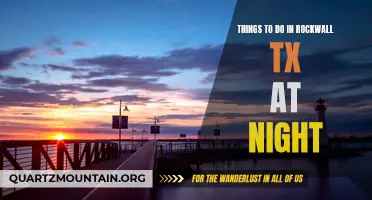
Nighttime Fun in Rockwall: Exploring Evening Activities in Texas
- Jun 24, 2023

Top 10 Exciting Things to Do in Winner, South Dakota
- Jul 27, 2023
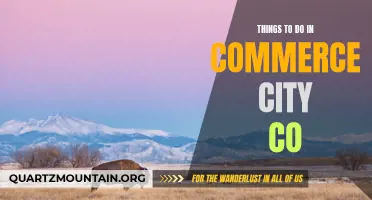
13 Fun Activities to Try in Commerce City, CO
- May 29, 2023
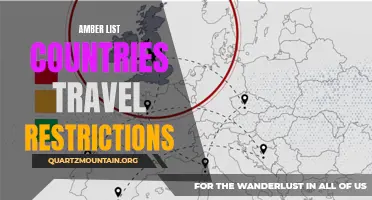
Understanding the Travel Restrictions for Amber List Countries: What You Need to Know
- Aug 05, 2023

- Travel to Equatorial Guinea
- More about us
Discover Equatorial Guinea
Discover Equatorial Guinea with Rumbo Malabo
SEE OUR PACKAGES AROUND EQUATORIAL GUINEA

Glance at Bioko island

Bioko Explorer
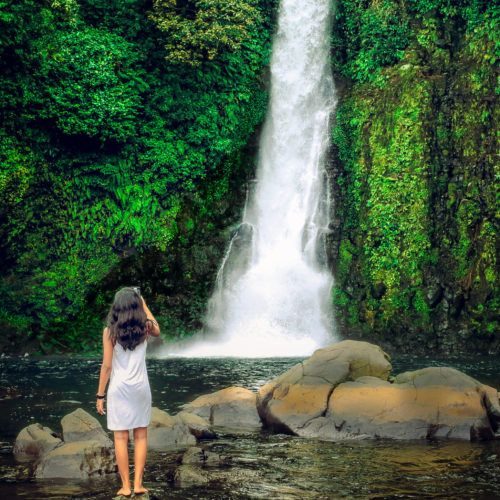
Bioko's Jewel
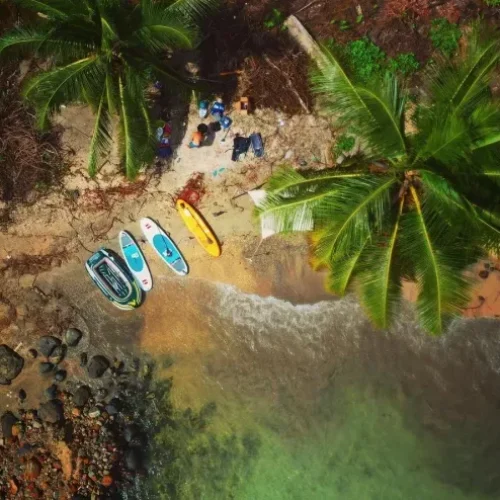
The secrets of Bioko
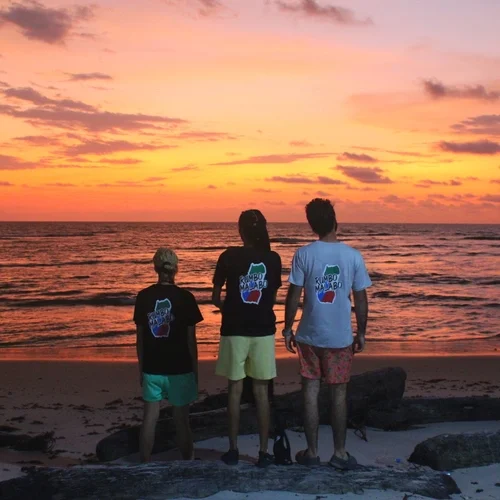
The beauty of Equatorial Guinea

Equatorial Guinea's island
We have what you need
Are you looking for daytrips?
“Discover the beauty of Equatorial Guinea in one day with the exciting tours of Rumbo Malabo. Don’t miss out!
Daytrips in Equatorial Guinea

Equatorial Guinea tailored for you
Customize your trip to Equatorial Guinea
We create completely personalized routes for you because, in the end, your happiness and satisfaction are the most important. Tell us about your interests and together we will design a fully customized tour
Get to know us
Rumbo Malabo is a young company born to showcase firsthand the enormous untapped potential of Equatorial Guinea.
We believe in responsible and ecological tourism, and therefore our philosophy is to reveal these yet-to-be-discovered secrets while respecting nature and its culture.
Travel to Equatorial Guinea like you never imagined with us!
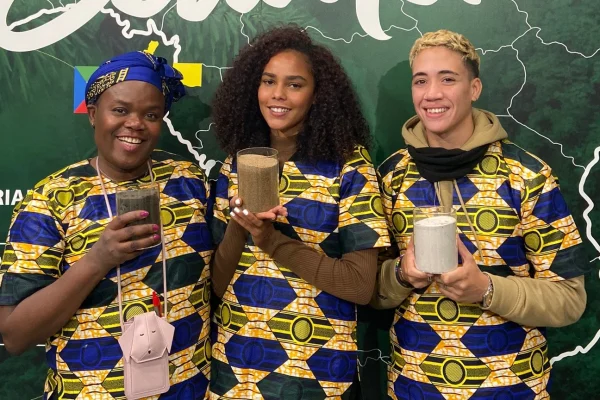
WHY SHOULD YOU TRAVEL TO EQUATORIAL GUINEA WITH US?
Latest opinions.
Síguenos en redes sociales
Sobre nosotros
Nuestras rutas, excursiones, suscríbete en nuestro newsletter.
© Copyright 2020 Rumbo Malabo. Todos los derechos reservados. Diseño realizado por agencia NeoAttack | Aviso Legal y Política de Privacidad | Política de Cookies | Mapa Web | Condiciones generales de uso | Métodos de pago

- Privacy Overview
- Strictly Necessary Cookies
- 3rd Party Cookies
This website uses cookies so that we can provide you with the best user experience possible. Cookie information is stored in your browser and performs functions such as recognising you when you return to our website and helping our team to understand which sections of the website you find most interesting and useful.
Strictly Necessary Cookie should be enabled at all times so that we can save your preferences for cookie settings.
If you disable this cookie, we will not be able to save your preferences. This means that every time you visit this website you will need to enable or disable cookies again.
This website uses Google Analytics to collect anonymous information such as the number of visitors to the site, and the most popular pages.
Keeping this cookie enabled helps us to improve our website.
Please enable Strictly Necessary Cookies first so that we can save your preferences!
Top Things to Do in Equatorial Guinea
Places to visit in equatorial guinea.
- 5.0 of 5 bubbles
- 4.0 of 5 bubbles & up
- 3.0 of 5 bubbles & up
- Good for Big Groups
- Good for Kids
- Budget-friendly
- Good for Couples
- Adventurous
- Good for a Rainy Day
- Hidden Gems
- Honeymoon spot
- Good for Adrenaline Seekers
- Things to do ranked using Tripadvisor data including reviews, ratings, photos, and popularity.

1. Catedral de Santa Isabel
2. The Malabo National Park
3. La Casa Verde

4. Bata Cathedral

5. Nuevo Estadio de Malabo
6. Finca Sampaka

7. Catedral Basilica de La Inmaculada Concepcion

8. Arena Blanca

9. Centro Cultural de España en Malabo
10. Pico Basilé
11. elobey grande.

12. Elobey Chico

13. Iglesia de San Fernando

14. 7m Memorial

15. Catedral de Ebebiyín

16. Hookah Paradise

17. Rumbo Malabo

18. Equatorial Guinea Bodypainting Festival

19. Opatrip Equatorial Guinea
What travellers are saying.
Important notice: Embassy temporarily closed.
Last new: The Ambassador of Equatorial Guinea presents Credential Letters to His Royal Highness the Grand Duke of Luxembourg
With magnificent and pristine seascapes, one of the most developed infrastructures on the African continent, highly developed and a more than attractive climate, Equatorial Guinea aims to become one of the main ecotourism destinations in Africa, with tropical beaches and a diverse offer of cultural and adventure activities.
- Ministry Min. of Culture, Tourism and Promotion of Handicrafts
- National Airline Ceiba Intercontinental
- Direct Flights Madrid-Malabo Frankfurt-Malabo Paris-Malabo
- Member Country UNWTO

Useful information
To travel to Equatorial Guinea, it is essential to have a visa. There are four modalities: tourism, business, humanitarian emergencies and congresses, meetings and seminars.
Find all the information, as well as the application forms, in our “ Consular Services ” section.
When to travel
We offer you some information that can help you on your journey.
December-February Dry season on Bioko Island.
June-August The best time to travel to the continent.
March-May and September-November Temperatures drop; roads are less passable during the rainy season.

Not to be missed
Surrounded by beautiful black and white volcanic sand beaches, Bioko has jungle, forest, savannah and the volcanic peak of Basilé (3012 m). Sea turtles come to its shores to spawn at Ureca, and the dense jungle around Luba Crater is the primate habitat the country is famous for.
Bioko Island
Bioko is the most frequented island as it is home to the capital, Malabo, formerly known as Santa Isabel. There is a lot of architectural evidence from the colonial era that can be found on the island, it is because it is through it that the Spaniards arrived to settle, and where they mostly lived. The island of Bioko includes two provinces: Bioko Norte and Bioko Sur, the difference of which is a slight change in temperature.

Continental region
Río Muni is the mainland and the largest territory in the whole country. Its administrative capital is located in the city of Bata and consists of four provinces: Litoral, Wele-Nzas, Kié-Ntem and Centro Sur.
Bata, on the shores of the Atlantic coast, is experiencing strong expansion and growth thanks to oil revenues. Tall buildings and wide boulevards mingle with the tranquility of its promenade and its coastal area.
Corisco Island
The best getaway to white sand beaches, warm waters and palm trees is in Corisco, so far little visited. Perfect for spending a few days of calm and tranquility in a paradisiacal environment.

Annobón Island
Mount alén national park.
It is one of Africa’s best kept secrets. With 2000 km2 of jungle-covered mountains, this national park is home to elephants, lowland gorillas, chimpanzees, buffalo, crocodiles, leopards and quirky creatures like the goliath frogs.
You may also be interested
- The country
- Political administration
- Share on Facebook
- Share on Twitter
- Share by Email
- Share by WhatsApp
Subscribe to our newsletter
- Consent * I agree and accept the privacy policy . *
The data collected in this form is the responsibility of the Embassy of Equatorial Guinea in Brussels and its purpose is to subscribe to the newsletter. The legitimacy is by consent of the interested party without any addressees since no data will be transferred to third parties except legal obligation. The user has the right to access, rectify and delete the data, as well as other rights, as explained in the additional information .
Embassy temporarily closed for repair work. For any questions or services, please contact
Tap enter to search
Resumen de privacidad

IMAGES
VIDEO
COMMENTS
Equatorial Guinea. Africa. This is the land of primates with painted faces, soft clouds of butterflies and insects so colorful they belong in the realm of fiction. Yes, Equatorial Guinea has something of a reputation, with a history of failed coups, allegations of corruption and buckets of oil, but there is plenty to bring you to this country's ...
18. Equatorial Guinea Bodypainting Festival. 1. Paint & Pottery Studios • Multi-day Tours. By carocruzalegria. It's a festival full of color, joy, many warm and friendly people, great artists from around the world and in a... 19. Opatrip Equatorial Guinea. Beer Tastings & Tours • Coffee & Tea Tours.
Plan Your Trip to Equatorial Guinea: Best of Equatorial Guinea Tourism. Essential Equatorial Guinea. Stay. A mix of the charming, modern, and tried and true. Sofitel Malabo Sipopo Le Golf. 563. Bioko Island, Equatorial Guinea. from $188/night. Panafrica Hotel. 32. Bata, Equatorial Guinea. from $199/night.
Equatorial Guinea is a country located in the center of Africa, bordering Cameroon and Gabon. It is the only country in Africa where Spanish is the official language, due to its colonial past.The territory of Equatorial Guinea is divided into two regions: the insular zone, where the capital Malabo is located on the island of Bioko, and the continental region, where the cities of Bata and ...
Equatorial Guinea is one of the African continent's least visited countries. It has a reputation for political instability with a history full of coups and corruption; and although vast offshore oil reserves generate huge wealth, the majority of Equatoguineans live well below the poverty line. However, for those in search of a totally different vacation experience, Equatorial Guinea offers ...
Built in 2011 to celebrate Equatorial Guinea's independence, this imposing structure is surrounded by gardens and overlooks the sea. Obelisk. Rio Muni. This black obelisk commemorates the visit of Pope John Paul II to Equatorial Guinea in 1982. More destinations you need to see. Ghana. Cabo Verde. Senegal. Cameroon.
Getting around Equatorial Guinea as a tourist can be somewhat challenging due to limited transportation options and infrastructure. However, there are several methods to navigate the country: Domestic Flights: For traveling between major cities and regions, domestic flights are the quickest and most convenient option. Malabo and Bata are the ...
Things to Do in Equatorial Guinea, Africa: See Tripadvisor's 2,006 traveller reviews and photos of Equatorial Guinea tourist attractions. Find what to do today, this weekend or in April. We have reviews of the best places to see in Equatorial Guinea. Visit top-rated & must-see attractions.
Arena Blanca. 15 Best Places to Visit in Equatorial Guinea 19. Playa de Arena Blanca, a white sand beach on Bioko Island, Equatorial Guinea, is recognized for its abundant butterfly breeding during dry seasons and diverse wildlife, housing over 200 bird species and four sea turtle species. The beach is a favorite among butterflies in the dry ...
Equatorial Guinea (Spanish: República de Guinea Ecuatorial) is a small country in Central Africa that's divided into two parts: the mainland and the islands. The mainland is wedged between Cameroon and Gabon.It is one of the largest oil producers in Africa, along with Angola and Nigeria.. Equatorial Guinea is largely homogenous; the Fang (a Bantu origin ethnicity) are the largest ethnic group ...
3. Beach Tourism: Equatorial Guinea's coastline along the Gulf of Guinea offers beautiful sandy beaches and warm waters. The island of Annobón, in particular, is known for its picturesque beaches and is gaining recognition as a potential beach tourism destination.
The campus grounds are grassy and there is a statue of Equatorial Guinea's president, Teodoro Obiang welcoming you. Visiting the university's older section is a must to see the traditional classrooms arranged in a semi-circle surrounding the lawn. Address: Carreta Luba s/n, Malabo, Equatorial Guinea Phone: +240-240-916-44 Website: http ...
Equatorial Guinea: sixth-least visited country sets sights on tourism This article is more than 8 years old Publication of first English-language guidebook shows one of Africa's most closed ...
1 Rio Muni Landmarks. Rio Muni is the continental region of Equatorial Guinea or the one in mainland Africa. Tourists who want to get the most out of this tropical nation should explore both insular and continental regions. After all, Rio Muni has landmarks waiting to be seen by curious wanderers.
Visit the Embassy of the Republic of Equatorial Guinea website for the most current visa information.. HIV/AIDS Restrictions: The U.S. Department of State is unaware of any HIV/AIDS entry restrictions for visitors to or foreign residents of Equatorial Guinea. However, the Government of Equatorial Guinea may require medical documentation including the determination of the HIV status of third ...
10 Reasons Why You Should Visit Equatorial Guinea. 1. Paradise Island of Corisco. The island of Corisco is located 31 miles from the Equatoguinean coast. Its white sandy beaches and crystal clear waters delight all tourists. Getting to Paradise Island is a bit of an adventure.
Go on an adventure and climb the highest peak in Equatorial Guinea, Pico Basile. Enjoy breathtaking views from the top. Visit Malabo. Explore the capital city of Equatorial Guinea, Malabo. Visit its historic sites, museums, and lively markets. Relax on Bioko Island. Head to Bioko Island and unwind on its beautiful beaches.
Continental Equatorial Guinea is a roughly rectangular territory bounded by Cameroon to the north and Gabon to the east and south. Near the coast are the small islands of Corisco and Great and Little Elobey. Bioko, by far the largest of the islands, lies off the coast of Cameroon in the Bight of Biafra. Annobón, a volcanic island, lies south ...
In today's Travel segment we focus on Equatorial Guinea. Did you know that in 2015, Equatorial Guinea was highlighted as the world's sixth least visited coun...
Mike Custance. 2024-02-09. Rumbo Malabo put together a superb tour for us encompassing Bioko Island, the mainland and one of the small islands. This enabled us to have an insight into the many facets of the country, and appreciate the range of developments Equatorial Guinea is undergoing.
Places to Visit in Equatorial Guinea. 1. Catedral de Santa Isabel. I Was to the cathedral for a religious service on Sunday. There is a religious office for french speaker at 9:30 am... 2. The Malabo National Park. Nice Park. Located on the way between airport and Malabo.
Tourism. With magnificent and pristine seascapes, one of the most developed infrastructures on the African continent, highly developed and a more than attractive climate, Equatorial Guinea aims to become one of the main ecotourism destinations in Africa, with tropical beaches and a diverse offer of cultural and adventure activities.
Equatorial Guinea (Spanish: Guinea Ecuatorial; French: Guinée équatoriale; Portuguese: Guiné Equatorial), officially the Republic of Equatorial Guinea (Spanish: República de Guinea Ecuatorial, French: République de Guinée équatoriale, Portuguese: República da Guiné Equatorial), is a country on the west coast of Central Africa, with an area of 28,000 square kilometres (11,000 sq mi).
The Embassy of the Republic of Equatorial Guinea accredited in the Kingdom of Morocco contributed through a multi-genre dance, at the closing ceremony of the VIII edition of Spanish Language Week, organised every year by the 13 accredited Spanish-speaking diplomatic representations.